IELTS Preparation with Liz: Free IELTS Tips and Lessons, 2024
- Test Information FAQ
- Band Scores
- IELTS Candidate Success Tips
- Computer IELTS: Pros & Cons
- How to Prepare
- Useful Links & Resources
- Recommended Books
- Writing Task 1
- Writing Task 2
- Speaking Part 1 Topics
- Speaking Part 2 Topics
- Speaking Part 3 Topics
- 100 Essay Questions
- On The Day Tips
- Top Results
- Advanced IELTS

IELTS Line Graph Model (Band Score 9)
This model line graph for IELTS is estimated at band score 9. The model answer below is for IELTS writing task 1 academic paper. Use this sample writing as a template for structure, key features and language for any IELTS line graph. There are also some tips given below to guide you and help you understand how to describe this type of graph.
IELTS Line Graph Sample Task
The graph below shows the consumption of 3 spreads from 1981 to 2007. Source: Graph above not created by IELTS Liz. Source unknown. IELTS Line Graph Answer The line graph illustrates the amount of three kinds of spreads (margarine, low fat and reduced spreads and butter) which were consumed over 26 years from 1981 to 2007. Units are measured in grams. Overall, the consumption of margarine and butter decreased over the period given, while for low fat and reduced spreads, it rose. At the start of the period, butter was the most popular spread, which was replaced by margarine from 1991 to 2001, and following that low fat and reduced spreads became the most widely used spread in the final years. With regards to the amount of butter used, it began at around 140 grams and then peaked at 160 grams in 1986 before falling dramatically to about 50 grams in the last year. Likewise, approximately 90 grams of margarine was eaten in the first year after which the figure fluctuated slightly and dropped to a low of 40 grams in 2007. On the other hand, the consumption of low fats and reduced spreads only started in 1996 at about 10 grams. This figure, which reached a high of just over 80 grams 5 years later, fell slightly in the final years to approximately 70 grams in 2007.
Tips for Line Graphs
- Paraphrase the line graph information for your introduction.
- Add axis information to your introduction if needed, such as categories.
- Put main trends and any other key features in an overall statement. The overview is the most important statement in your writing task 1.
- Make sure each body paragraph sentence has numbers and dates to support it. This is vital. Ensure all data is accurate.
- Use a range of linking words. Try not to repeat them.
- Aim for around 180 words for writing task 1.
Recommended Tutorials
- Bar Chart Model: Band Score 9
- Line Graph Vocabulary
- The 4 main complex sentences for a line graph: Video Tutorial
- All writing task 1 lessons and tips
………………………………
Subscribe to get New Posts by Email
Type your email…
IELTS Academic Book 15. Test 2 Miss Liz or any ILETS candidate. Please share your advice on my piece of writing on task 1, I would humbly appreciate it. Thank you!
The line graph illustrates the proportion of visitors, who visited a specific Caribbean island over 7 years from 2010 and 2017. The numbers are measured in millions.
Overall, the total number of visitors fluctuated throughout the period given, while the number of visitors staying on cruise ships who started from the lowest number in the first year showed a minor decline after two years before going up to the second highest number. There was a steady growth in the number of visitors who stayed on cruise ships.
With regards to the figure of people staying on cruise ships, it began at around 0.3 millions of visitors in 2010 and grew steadily to 0.5 millions people after one before falling down to the same number in 2012, however throughout the coming years the number climbed considerably to the second highest of approximately 2 millions visitors in the final year.
Total number of visitors over the years went up marginally. It started with 1 million visitors which was the highest compared to other visitors, who reached at the highest peak of around 3.5 millions 7 years later. In contrast, the number of people staying on island accounted for an unstable increase, there were about 0.3 million of people who stayed on island in the first year, and this remained constant till 2012. The figure grew up slightly to a peak of 1.5 million visitors in 2015 before dropping to around 1.5 million in 2016 and grew again to the same number in the final year.
I don’t usually give feedback, but I will came a few comments: 1) your introduction is very limited. There are only three lines in this line graph and you didn’t introduce them. You should be introducing the key information that helps the reader understand what the line graph is presenting. In this case, it is visitors to a Caribean island who stayed on cruise ships, those who stayed on the island itself and the total number of visitors overall. 2) your overview statement contains inaccurate information. Nearly all lines in a line graph will fluctuate in some way – only a straight line doesn’t fluctuate. But in this graph, the fluctuation of the total number of visitors was insignificant. The key feature was that the total number of visitors increased considerably over the period given. Not being able to focus on key features for the overview will lower your score. 3) Your overview gives information about the visitors who stayed on cruise ships, but nothing about those who stayed on the island. Why? The overview contains ALL key features. While both visitors on cruise ships and those on the island increased over the period, cruise ships were less popular at the start of the period compared with staying on the island, but this trend reversed by the end of period. You really need to practice spotting key features and report them clearly. You also need to know what to compare and what not to compare. You don’t compare the total number of visitors with visitors on a cruise ship. The total number of visitors is separate and doesn’t need comparing. But you can compare visitors who chose to stay on a cruise ship with those who chose to stay on the island. Most line graphs don’t have much comparisons, but you can put this one in the overview.
I won’t make more comments on the body paragraphs because you can see what you need to focus on. Usually, when someone writes a good overview, the body paragraphs follow a similar logic.
For anyone else wanting feedback, please note that I don’t provide a marking service or feedback service at present. Any writing you post on my website will not usually get feedback. So, when I do give feedback to someone, it is actually for the benefit of everyone who reads the comments. All the best, Liz
Hi Liz,my name is Shamilah, iam from Kenya,I wish to start my IELTS academic from 13th this month,and I would wish to be part of your classes na training too,iam beginning my journey for the USA, kindly add me to your group for the beginners so that I can be able to learn, thank you so much.
When your English is at the level you want to get the band score you want, you will start learning about IELTS, practicing tests and materials, and developing skills. There is no such thing as a beginners IELTS course. IELTS is IELTS. This website contains over 300 pages of test information, practice lessons, tips, topics, model answers etc – all for free. It is your task to use these free resources to prepare for the test when you are confident in your level of English.
You are a great person
The line graph depicts the amount of consumption of three types of spreads over a period of 26 years, beginning from 1981. Units are measured in grams. The amount of butter consumed was higher than another kind of spread till 1991. By 2007, the consumption of all of the spreads had reduced among the population. In 1981, almost 140 grams of butter was eaten compared to 90 grams of margarine. By 1991, the amount of butter and margarine consumed had become the same. However, after 1991, butter consumption saw a steady decline but margarine remained stable till 1996. The consumption of butter has seen a dramatic decline since 1981, reducing to about 50 grams in 2007. By contrast, the popularity of reduced and low fat spreads increased steeply, reaching a peak of about 80 grams in 2001. Margarine usage remained relatively stable throughout the given time period, seeing a sharp decline only after the year 2001.
Hello Liz. I have a question about writing task one. Recently, I have seen some band nine sample answers from a particular site, and the have some strange words. Here is the whole sentence – “The line graph delineates the fluctuations in average monthly temperatures across three prominent cities: Paris, Dubai, and Sydney, over the course of a year, with the temperatures expressed in degrees Celsius.” Can I use the word “delineates” in WT1?
I can’t comment on other websites. Do you know the author? Did the author complete the IELTS examiner training? Are you happy with their teaching qualifications and general experience? Such language is used to impress the examiner according to some teachers. It doesn’t impress them. It is not about creative writing or fancy language. A report is a simple factual report on data given. Use the word “illustrates” or “shows” or “gives information about”. Always aim for accuracy and appropriacy, even up to band 9.
The chart illustrates the amount of three types of spreads (margarine, low fat & reduced spreads, and butter) which were consumed from 1981 to 2007. Units are measured in grams.
Overall, the three spreads are on a downward trajectory. As of 2007, the consumption of all the spreads are below 80 grams. Initially, butter was the most popular spread consumed in 1981 and it remained as the top choice until 1991, when its consumption fell to 100gr, which was at the same level of consumption as margarine. From that point onwards, the popularity of margarine took over the butter market and the butter fell off.
Butter consumption started off strong at 140 gram in 1981 and then rose to its peak at 160gr in 1986 before sharply declined to 1991. Afterwards, butter consumption kept declining to about 50gr in 2007. Correspondingly, the consumption of margarine also started strong at 90gr in 1981 and slightly fluctuated after the first year before dropping to 40gr in the final year.
In contrast, the consumption of low fat and reduced spreads in its first year was only at 10gr. However, the number skyrocketed to a little over 80gr in just 5 years but the consumption fell of to around 70gr in 2007.
I don’t usually make comments, but I will say – please be more careful with the overview. The overview is the most important part of your task 1 report. It does not contain any details of how much in different years. It contains only the main trends. Please read the model answer above as a guide, otherwise you will get a low score. Also check your use of vocabulary, we don’t use words such as “fell off” or “took over” or “started strong”. You can find useful vocabulary for line graphs on the main page for writing task 1 on this website.
The line graph illustrates the fluctuation in the average prices of staple foods – bread, milk, cereal, chicken wings, and marmalade – in the UK over 25 years from 1993.
Overall, the prices of all staples increased during the given period. Cereal stood out as the most significant expense, experiencing a massive surge after a few fluctuations. In contrast, the initially lowest-priced staple, milk, witnessed numerous climbs and eventually secured a position among the top three highest.
The trend in cereal prices began at around $1.5, fluctuated with an uptrend reaching $2.3 in 1998, followed by a downtrend stabilizing at under $2. Subsequently, there was a dramatic climb to nearly $3 in 2018. Similarly, chicken wings, initially priced at approximately $1.2, underwent fluctuations before reaching almost $2.3 in the final year after the price of cereal.
Conversely, the initially lowest-priced staple, milk, started at $0.2 in 1993, gradually rose until 2003 then experienced fluctuations that surpassed the price of chicken wings in 2013, and dramatically increased to $2 in the final year. Bread’s price, starting at nearly $0.3, considerably rose to $1.2 in 2018. Marmalade’s price fluctuated from $0.5 in the first year to just $1 in the final year.
I would like to improve my clarity, cohesion, and consistency in expression. if possible, please help to review and give me some feedback for this line graph writing, thank you so much
Absolutely good essay
hi , of course it’s the most useful task 1 essay , I’ve ever read so far , Thank you so much Liz🤝 much appreciated
The depicted graph elucidates the amount of intake of three different kinds of spreads (margarine, low fat, and reduced spread) that were consumed during 26 years from 1981 to 2007. The measuring unit is the gram. Overall, the consumption of butter and margarine fell over the years, and the amount of low-fat and reduced spread rose. At the start, butter was the most consumable spread but was replaced by margarine from 1991 to 2001. Afterthat, low fat and reduced spread were widely used throughout the remaining period. In 1981, the intake of butter was about 140 grams, and after a period of time around 5 years it rose to around 160 grams. Afterthat, it fell dramatically to around 70 grams in 1996. At last, it ended the journey in 2007 at about 50 grams. Whereas, the margarine consumption started at around 90 grams in 1981. While fluctuation it maintained the position until 2001. Afterthat, it holds a position below 40 grams at the end of the period given. Whereas, the low-fat and reduced-spread consumption started from the year 1996 and in just 4 years it holds the position above the remaining two spreads at around 85 grams. By maintaining its rank it ended the journey at around 70 grams in 2007.
The line graph illustrates the amount of consumed margarine, low fat & reduced spreads, and butter between 1981 and 2007 in grams. Overall, the amount of butter and margarine showed a downward trend over the given period whilst low fat & reduced spreads experienced an upward trend despite its late entrance to the market. When the line graph is examined in detail, the amount of consumed butter was just over 140 gr in 1981. In the following five years, it peaked at 160 gr and then significantly decreased by 100 gr. Subsequently, it slightly fell to 50 gr. A similar trend was seen including a fluctuation in margarine which was eaten at approximately 90 gr at the beginning then modestly declined to 80 gr and recovered quickly to 100 gr in a decade in which the butter had the same amount in 1991. Till 1996, the figure levelled off and then dropped gently to the same amount as in 1986. Afterwards, it was almost halved at the end of the given time frame. The use of low fat & reduced spreads started in 1996 at almost 10 gr. It reached a peak of 80 gr in which margarine had the same amount in 2001. In the following five years, it gently dropped by approximately 10 gr.
Hi Liz, could you please mark my answer.
The line graph indicates how the number of three spreads which was consumed over a 26-year period, starting in 1981. Overall, it can be seen that three spreads consumed where Margarine and Butter reduced whereas Low fat & reduced spreads escalated. Furthermore, consumption of Low fat & reduced spreads was consistently higher over the period. Looking at the chart in more detail it is evident that the amount of butter was used, it began at around 140 Grams(gm) in 1981. By 2007, it had decreased to approximately 65 gm, which was the greatest drop of all the categories. Similarly, the consumption of Margarine was around 90 gm in 1981. After that it was slightly increased in 1991 and remained constant to 1996, it fell to around 40 gm in 2007, respectively. Turning to the remaining amount of consumption of low fat & reduced spread in beginning almost it was 10 gm in 1996. This number climbed to 85 gm in 2001, which has taken only 5 years. However, in 2007 it reduced approximately 70 gm.
Very nice 👍
The above given line graph depicts the utilisation of margarine, low fat and reduced spreads and butter spreads between 1981 to 2007.
Overall, the consumption of margarine, low fat and reduced spreads and butter has declined throughout a twenty six years period. Utilisation of margarine over the years shows significant fluctuations while butter shows a general decline and low fat and reduced spread consumption shows a drastic increment with a steady downturn. During the beginning of the period consumption of butter had been the highest and utility of low fat and reduced spread was the lowest while in contrary during the end of the period low fat and reduced spread consumption had been consumed enormously out of all and margarine consumption had hit rock bottom.
In 1981 approximately 140 g of butter had been consumed which illustrates a gradual downward trend in the years 1986 to 1991 and the consumption load drops down to 100g. During the entire period from 1986 to 2007 the consumption of butter depicts a negative gradient showing a gradual drop in the utility reaching almost 40g of consumption amount by 2007. While on the other hand, the consumption of margarine in 1981 was almost 90g which dropped down to 80g during 1986. Then it attained a gradual resurgence to 100g surpassing the consumption amount of butter and reached a constant plateau from 1991 to 1996. Then the amount gradually dropped down in the next consecutive years and reached 40g by 2007.
While the consumption of margarine was less than 20g during 1996 and the amount skyrocketed making the utility congruent to the amount of margarine consumption during 2001 and eventually dropping down with a steady amount to approximately 60g by 2007.
Thank you so much Liz. I have learned a lot on your website and I did well in my exam. Thanks again from the bottom of my heart.
Glad to hear you did well 🙂 Wishing you all the best for your future 🙂
thank you Liz.I have learned a lot on your website.
The information regarding the amount of three different spreads in terms of grams (margarine, low-fat and reduced-fat spreads, and butter) consumed between 1981 and 2007 is shown in the line graph. Overall, it is clear that the consumption of low-fat and reduced-fat spreads and butter experienced both decline and rise, while margarine’s rate fluctuated over the period given. Interestingly, the number of consumers of margarine and low-fat and reduced-fat spreads was equal at the end of the final third of the whole time frame.
From 1981 to 1986, there was a rise of nearly 20 grams, from 140 to 160 grams, in butter consumption. Low-fat and reduced-fat spreads’ average usage, however, reached a peak of 85 grams in 2001. Although both numbers initially showed an upward trend, they then began to fall steadily.
Between 1981 and 1996, the quantity of margarine production faced many fluctuations. By 1996, its rate had dropped constantly from 85 to 40 grams. Margarine and “low-fat and reduced-fat spreads” were used equally in 2001 in terms of product consumption.
This line graph illustrates the amount of consumption of 3 spreads (margarine, low fat and reduced spreads and buffer) in 26 years from 1981 to 2007. The unit are measured in grams.
Overall, the consumption of margarine and buffer decreased over the period given, while for low fat and reduced spreads, it rose. The popular spread was butter between 1981 and 1991 ,and which was replaced by margarine until 2001, and followed by low fat and reduced spreads in the last year in 2007. Butter began at about 140 and rose slightly to reach a peak of approximately 160 in 1986, after which it fell dramatically at almost 50 in the end of the period. Likewise, margarine was about 90 in the first year and it experienced a fluctuation from 1986 to 2001 before declined steadily to exactly 40 in the last year.
On the other hand, for the amounts of low fat and reduced spreads was started at almost 10 in 1996 and climbed sharply to just over 80 in 2001, after which it decreased to about 70 in the end of the period.
The line graph illustrates the usage of three kinds of spreads(butter, low fat and reduced spread and margarine) from 1981 to 2007.The units are measured in grams. Overall, the consumption of margarine and butter was reduced over the following period while for low fat and reduced spread it rose, before falling. Butter was increased upto 160g in 1960 and the decreased below 50 gram in the final year. The consumption of low fat and butter was very low, below 20 gram, in 1996 then increased upto 80 gram in 2001.
In the beginning, the consumption of butter was 140 gram then it gradually increased to 160 gram in 1986. After that it fell dramatically to 60 gram, between 1986 and 2001, and hit a low of 50 gram in 2007. With regards to the amount of low fat and reduced spreads, it’s consumption started from 10gram in 2001 then rose dramatically and reached above 81 gram in 2007 before fell down to 70 gram at the end of the period. On the other hand, the consumption of butter was started from 90 gram and decreased to 80 gram at the start of period. After that, it went up to 100 gram and then remain same until the year 1996 before hit the low of 40 gram in 2007.
The line graph below illustrates the amount of various spreads consumed (margarine, low fat and reduced spreads, butter) from 1981 to 2007. Overall, it can be seen that there were considerable downwards trend in the consumption of both butter and margarine, with the exception of low fat and reduced spreads. It is also clear that Butter was the most common product in 1981, but in 2007 Low fat and reduced spreads registered the highest figure. Starting at about 140 grams units in 1981, the consumption of Butter gradually reached a peak of 160 grams in 1986, at which point this figure started to drop dramatically to only 50 grams. Likewise, the figure for margarine witnessed the same pattern in which their consumption rose from 1986 to 1996 before declining to just 40 grams at the end of the period. Moving on, in 1996, although the comsumption of Low fat and reduced spreads appered later than others 15 years and was the lowest point at that time; however, this figure shot up swiftly hitting a peak of over 80 grams and finally remained the highest amount comsumed in 2007.
The line chart illustrates the amount of three different types of spreads (margarine, lowfat & reduced spreads and butter) that were consumed, over a period of three decades, from 1981 to 2007. Overall, it can be clearly seen that while the butter consumption began with a higher value rather than the two items, it hit a low by the end of the given period. Low fat & reduced type did not appear in the consumption map till 1991. Butter consumption stood at slightly over 140 grames at the beginning of the period before rising gradually to reach a peak of almost 160 gms and then decreased steadily to reach its minimum value of about 50 gms in 2007. Whereas there was a major difference between margarine and butter consumption at the start of the given period, this difference decreased dramatically to become less than 20 gms in 2007. Margarine consumption fluctuated around 90 gms from 1981 till 2001 after it fell smoothly to approximately 70 gms in 2007. 1991 witnessed the appearance of Low fat & reduced spread type with a value of about 10 gms. This figure, which increased gradually to its peak of about 80 gms in 2001, experienced a slight decline to about 70 gms in the last year.
The line graph demonstrates how three kinds of spreads (margarine, low-fat & reduced spreads and butter) were consumed between 1981 and 2007. Units are measured in grams. Overall, the amount of consumed spread witnessed (experienced) a downward trend with a plunge in using margarine and butter than the others over the period given. At the beginning of the period, there was only two spreads including margarine and butter used, with the consumption of butter was roughly 140 grams which was almost 50 grams higher than margarine. From 1981 to 1996, while the consumption of butter increased steadily and then reached a peak of around 160 grams in 1986 before decreasing dramatically to around 70 grams in 1996, the amount of consumed margarine dipped between 1986 and 1991 and remained flat until 1996. From 1996 to 2007, the low-fat & reduced spreads was used for the first time in the start of the period and then increased rapidly to hit a high of around 85 grams in 2001 before dropping to 40 grams in the final year. Likewise, both of the consumption of margarine and butter witnessed a downward trend in this period. There was a steady fall and followed by a sharp decrease in the consumption of margarine. Similarly, the butter declined modestly from around 70 grams in 1996 to about 50 grams in 2007. In addition to that, the low-fat became more popular at the end of period from 1981 to 2007.
The line graph consumed three spreads (margarine, low fat& reduced spreads, and butter) from 1981 to 2007. Overall, the consumption of margarine and butter reduced in almost all years. In contrast, low fat and reduced spreads had the lowest amount in the whole chart, but it rapidly increased in six years. In the last years, we also saw some reduction in it. However, in the beginning, the butter had the highest ratio (up to 160 grams) in 1996. with time, we could see dramatical fall in the whole years. At the same time, margarine had fluctuated ratio in 1 decade. After that, it remained the same for six years and had fallen proportion in remained years. Moreover, low-fat &reduced spreads had the lowest amount in the graph but dramatically increased (1996 8 grams but reached 80grams in only six years). It also had slightly dropped 70 grams.
The line graph illustrates the amount of consumption of three different types of spreads (margarine, lowfat and reduced spreads and butter) from the period between 1981 to 2007. Units are measured in grams.
Overall, the consumption of margarine and butter showed a downward trend over the whole period, while the lowfat and reduced spreads consumption rose dramatically from 1996 to 2007. At the early stage of the period, the butter spreads dominated, whereas the contribution for lowfat and reduced spreads peakeda t the end of the period.
The butter spreads showed a dramatic increase from 140 to 160 grams in 1986 and declined sharply to50 grams at last in 2007. Similarly, the margarine eaten by consumers fall to 40 grams in 2007 which fluctuated before 2001 that is started from the beginning at 90 grams.
However, The whole period of 26 years had shown a significant change for lowfat and reduced spreads from 1996 to 2007. The consumption rate of that stood at a peak above 80 grams which started from 10 grams and later declined to 70 grams in 2007. But the rate of consumption remained at the top among all three spreads at the end of the period.
The Graph illustrates the intake of different type of spreads (margarine, butter and low fat & reduced spread) between the years 1981 to 2007. Units are measured in grams Overall, the butter and margarine consumption has drastically decreased over a period of time. Low-fat & reduced spreads shows an upward trend in the years 1996 to 2001 and accounted to be the highest consumed spread in the year 2007. The spread consumption was reduced in 26 years. In the year 1981, butter was used by around 140% which rose to around 160 % in the year 1986 before falling to 50% in the last year. Whereas the margarine started around 90% and there was slight reduction in margarine consumption the year 1986 which eventually increased to 100% in the years 1991 to 1996 before showing downward trend and accounted to be least consumed spreads in the year 2007 On the other hand, Low fat & reduced spreads came into the picture in the year 1996 with 10% which drastically kept growing to 80% in the year 2001 and 75% use low fat & reduced spreads in the year 2007.
The below graphs illustrate the expenditure of Margarine, Low fat & reduced spreads and Butter into different six years (1981 to 2007). Overal, most of people spent Butter which is increased from up to 160 gr at he other hand Margarine drawdown into 80 gr while the people firstly never use Low fat& reduced spreads till to 1990. From the green graph inferred spending Butter after peak point drastically declined less then 60 gr in 2007 and also the blue graph shown , the people started eating Margarine in 1981 and a little bit decreased to 80 gr and contrast to increase up to 100 gr and steable to 1996. When the people consuming Low fat & reduced spread using margarine declined and raised using butter at the peak of 82 gr
The line graph sheds light on the consumption trend of 3 spreads categories (margarine in blue line, low fat & reduced spreads in red line, butter in green line) from year 1981 to year2007. Unit is measured in grams.
Overall, butter had the most total consumption over these 26 years which kept a higher consumption amount until margarine, its substitute, reached the same consumption level. Comparatively, low fat and reduced spreads appeared with its dramatic increase among 3 categories in spite of an inched downward afterward.
In 1986, the consumption on butter (160gram) is twice higher than margarine (80grams). However, the situation had changed since 1991. Although margarine made a platform from 1991 to 1996 by having the same number at 100grams, the difference between these 2 items was bigger and bigger.
In 1996, low fat and reduced spreads started being consumed and made a dramatic increase from less than 20grams to 80grams. Indeed, it is a critical year for margarine which was the main category from 1991 to 2001, but dropped further to 40grams, the least number in 2007.
The graph shows the consumption of Margarine, low fat and reduced spreads and butter during the years 1981 to 2007 showing different behaviors, units are measured in Grams.
Overall, Butter and low fat and reduced spreads had the bigger changes during these years from these 3 spreads, butter dropped from 160 grams in 1986 to about 45 grams in 2007 and fat increased the consumption from 1996 with 10 grams approximately to about 82 grams in 2001. However, this behavior was different from that year since it started to reduced gradually. In terms of Margarine, the ingest of this spread has been affected by fluctuation, this conduct is different from the other products. Initially, from 1981 to 1986 it is reduced, and then, in 1991 it was increased until 100 grams, this behavior continued to 1996 when began to drop to 2001 and from this point, the same conduct is showed until 2007.
The line chart illustrates the changes in using 3 types of fats between 1981 to 2007. As we can see, there are not any tracks of low fat & reduced spreads up to 1996 and that time it stood at around 10 grams but significantly increased and reached a peak of more than 80 grams in 2001. It was confronted to slight decline and reached to 70 grams approximately. Butter was most favorite fat in 1981. The rate of popularity was just more than 140 grams and continued climbing at the end of 1986. It was sharply slipped back to 70 grams stage between 1986 and 1996. Eventually, the consumption of butter plunged to less than 60 grams during 11 years from 1996 to 2007. Margarine was started from 90 grams in 1981 but plummeted to 80 grams just in 5 years. The next round was the opposite and this fat could rocket to 100 grams in the next 5 years. It leveled off at this score between 1991 and 1996. From 1996 a smooth falling was started and it came back to just more than 80 grams in 2001. Margarine was dramatically declined to 40 grams in 6 years from 2001 to 2007.
The graph illustrates the usage pattern of three types of spreads for a period of 26 years from 1981 to 2007. The units are shown in gms. Overall, the consumption of butter decreased given time while that of fat & reduced spreads followed the opposite trend.
The line graph Describes the consumption of 3 spreads between 1981 to 2007.
Overall, the diagram shows that consumption rates of Butter and Margaring experienced a decrease through out the time period. However, The consumption rates of Low fat & reduced Spreads experienced growth and Steadiness. All 3 spreads experienced many fluctuions.
In 1981 the consumption rate of Butter was about 140 grams. In one year, it rose to approximately 160 grams. After that, it decline subceeding margarine in 1991 and low fat & reduced Spreads in 2001 and reached to about 50 grams in 2007. The consumption rate of M was about 70 grams in 1981, it experienced a fall in 1985 which was about 80 grams. It experienced a growth of 20grams in 1991 exceeding the consumption rate of butter. It was steady till 1996 and after that, it declined subceeding low fat & spread n 2001. At the end of the period, it was about 4 grams, lowest among the all three.
The consumption rate of low-fat and reduced spreads was out 15 grams in 1996. It rocketed in 2001 approximately 81 grams exceeding both Butter and M. It experienced a slight downtrend till 2007 and at the end of the period, the consumption rates of low fat and Spreading was about 70 grams, which was highest amongst the other rates.
Note : Please let me know if there are any Modifications. Thank you.
The line graph illustrates how three different spreads were consumed by consumers from 1981 to 2007. Units are in grams Overall Butter and Margarine were initially eaten by the public but as the time elapsed, they lost their worth and new substitute known by the name low fat and reduced spreads has taken over their places In 1981 Butter was having a consumption rate of 140 grams which reach its peak to 160 grams in 1986, then it fell drastically to a level of 50 grams in 2007. While on the other hand Margarine was eaten around 90 g at the start, fluctuations in its usage were regularly there, but then it fell significantly to 40 g at the end of the period Low fat and reduced spreads their usage by residents began from 1996 at 10 g, then escalated to its highest point 80 g in 2001. Then in 2007 it shown a slight drop in its consumption level 50 g
The line graph illustrates the amount of three types of spreads (margarine, butter, and low fat and reduced spreads) consumed by people within 27 years from 1981 to 2007 measured in grams. Overall, Butter once was the most consumed spread but fell drastically over years while low-fat spreads became the most popular spread in the last year.
In terms of butter, the consumption rate started from about 140 grams in 1981 and peaked at nearly 160 grams in 1986, but dropped drastically over years until around 50 grams in the last year. Margarine was consumed around 90 grams in the initial year, fell and rose in slight numbers over periods, but eventually fell to 40 grams in 2007.
On the other hand, low fat and reduced spreads were first introduced in 1996 with the consumption rate was only below 20 grams. Then it became popular in the next five years where it rose dramatically to about 80 grams. However, in the latest year, people consumed less of this type of spread by around 70 grams.
Hello Liz, needed to confirm little something –
This was my try at writing the body 1 paragraph:
In 1981, butter consumed was slightly over 140g, while margarine was only approximately around 90g. The amount of consumption of butter rose to its peak nearly in the middle of the year 1986, which was almost 160g, the highest ever hit by any spread during the complete period. However, from there, there was only constant fall in its consumption. Margarine on the other hand, had quiet stability in its trend of consumption, since it only varied between 40g to 100g, also because it hit a plateau at 100g for considerably long period of time from around beginning of 1991 to near end of 1996.
I used Grammarly, it showed me many suggestions on missing “a” and “the”. No matter how much I try, I tend to skip them and it seems completely normal to me.
Do you think my marks will be deducted for the missing articles based on the paragraph I shared above? Are there not sufficient articles in it? Please let me know if possible! Thanks very much for your website, Liz 🙂
PLEASE EVALUATE. Many thanks in advance. The graph shows the usage of three different kinds of spreads (Margarine, butter, low fat and saturated spreads) over the span of 26 years from 1981 to 2007. Overall, the usage of margarine and butter reduced over the period of time as compared to low fat and reduced spread, whose consumption increased. At the starting year, butter being the widely used spread its consumption rose from about 140 grams to just below 160 grams in the time of five years (1981 to 1986) after that it dips to around 50 grams in the final year. Likewise, margarine was the second most used spread after butter, its usage was approximately 90 grams in the first year thereafter the figure fluctuated a little and then finally get down to 40 grams in the last year.
On the other hand, low fat and reduced spreads even being the latecomer in the market but its consumption rose considerably from approximately 10 grams in 1996 to just above 80 grams in 2001 after drops slightly about 70 grams at the end of the period.
If there is anyone who can check and tell me where I stand by reading graph’s discription. I would be thankful.
The given line graph illustrates the utilisation three kinds of spreads (Matgarine, Low fat reduced spreads and butter) over the period of 26 years(1981 to 2007). The units are measured in grams.
Overall, it can be seen that the consumption of low fat and reduced spreads saw upward trend in last year while butter and margarine had reverse pattern during the same time. Initially, butter was consumed at the highest rate but later this was overcome by low fat and reduced spreads.
At the start of the period, the butter was used abundantly that was recorded nearly 140 grams which was peeked to around 160 grams and then dramatically reduced to approximately 50 grams in 2007. Similarly, between 1981 and 2007 Margrine’s consumption fluctuated between 90 grams to 40 grams.
On the other hand, low fat and reduced spreads started consuming during the period about 1996, although it was consumed in negligible amount that means near about 10 grams that quantity rose drastically and reached to 90 grams approximately and thereafter there was a little drop in 2007 but the consumption was still the highest (around 70 grams) that was noticed as the largest utilisation among the three.
The given line graph illustrates the information about the amount of three different kinds of spreads (Margarine, Low fat & reduced spreads, Butter) which were consumed between 1981 and 2007. Units are measured in grams.
Overall, it can be seen that the consumption of Butter and Low fat & reduced spreads saw an upward trend, while that of Margarine had a reverse pattern. It is noticeably that The largest consumption was on Butter in 1981, but in 2007 Low fat & reduced spreads’ consumption was most preferred.
Butter ranked first among the 3 surveyed kinds of spreads in the first year of the period. In the year 1986, the number of Butter consumed reached the highest point of around 160 grams. Thereafter, it dipped dramatically and hit the lowest point of about 50 grams in the final year.
In 1981, Margarine was the second most spread with around 90 grams. Over 5 years later, there was a gradual decline in the amount of Margarine by 10 grams. However, It increased moderately at 100 grams and leveled off until 1996. After that, the figure of Margarine fell considerably and hit a low of 40 grams in 2007. About Low fat & reduced spreads’ data, starting nearly 10 grams in 1996, it went up rapidly and caught up with Margarine in 2001. After this, there was a minimal decrease in the amount of Low fat & reduced spreads, yet, it was the most well-noted in the final year.
The line graph depicts a change in consumption of three spreads, Margarine, Butter, and Low fat and reduced spreads. The comparison is over the course of 26 years, from 1981 to 2007. At first glance, it is observed that the consumption of butter and margarine declined over the period, whereas low fat and reduced spreads had increased consumption during the time frame. Consumption of utter was the highest in the year 1981, which is slightly above 140grams, it then went on to peak at 160grams in the next five years before plummeting to 50grams at the end of the period. In 1981, Margarine was consumed at 90grams and by 1996 it overtook butter as the most popular spread consumed. Eventually, Margarine ended as the least popular spread at about 40grams in 2007. Low fat and reduced spreads were first consumed in 1996, starting at 10grams and rapidly increasing above 80grams falling slightly down to 70grams in the final year. In summary, the consumption of low fat and reduced spreads instantly became a popular choice among the other two spreads. Whereas, Butter and Margarine consumption decreased over the period.
The linear graph showcases the amount of margarine,butter and low fat and reduced spread consumed in grams between1981 to 2007.
By and large, while the butter and margarine showed erratic patterns on their demands over the years surveyed, the free-fat and reduced spreads were dramatically increasing in the span of 11 years.
There were multifolds of notable changes on the demand of margarine and butter , one of this was, while the use of margarine sharply inclined by 20 grams the consumption of butter recorded slightly dip from 90grams to 80 grams. Another recognizable changes was the butter made a tremendous slumped that reached well within 60%, leveling off with margarine on 1991. On the other hand, while margarine stabilized at 100grams for half decade,the butter experienced further drop to 70grams . For 11 years left, both demands forementioned above recorded their lowest how much which reached 40 grams .
Meanwhile,although free-fat and reduced spreads started it popularity on 1996, the inflated demand of its skyrocketed by 8 folds and slightly reduced by 10 grams as the year ends.
Can someone read my answer and score it. Thanks in advance. Need a reference of where I am standing right now for giving IELTS.
The given graph illustrates three different type of spreads (margarine, Lowfat and reduced spreads, and butter) consumed in years 1981 to 2007. Overall, the use of margarine and butter spreads decreased between the above mentioned years while the consumption of Lowfat & reduced spread increased placing it in the first place in the year 2007, although people started to use this type up until the year 1996. Initially, the consumption of butter started from just above 140 grams in the year 1981, increasing this count to just below 160 in 1986, after this, the number started to decrease over the period until 2007, where it ended up at around 50 grams. Around 85 grams of butter spread was consumed in the year 1981 which varied significantly over the period and ended up 40 grams for the year 2007. The lowfat and reduced spread was not introduced up until the year1996 when the consumption was marked at around 10 grams from here the number started to increase drastically ending the record at around 65 grams in the year 2007.
Hi harshit,
Comments: 1. Low fat are two separate words 2. At one place you wrote (, and) whereas in the other you didn’t. (, and is the right way to address it) 3. Between the above isn’t the right sentence; rephrase it 4. In the paragraph that starts with initially, you don’t have to emphasize too much on years 5. Do not repeat the words in a sentence (eg: just above, just below) 6. No comma after “after this” 7. Space needed in the last paragraph between year and 1996 8. The last sentence is too lengthy and incorrect grammatically. Advise you to rephrase it
Hope this helps! 🙂
The line graph depicts the intake of three different spreads(butter, margarine and low fat & reduced spreads) in grams over two and a half decades from 1981 to 2007. At the outset, it is evident that both margarine and butter consumption have declined over the said period, with the butter experiencing a steep fall.The popularity of butter was replaced by margarine in the 90’s, which then gave way for low fat & reduced foods in the later years (2001). The butter consumption reached an all time high in 1986 to as high as 160gms from the initial 140gms in 2001. However, this hike was followed by a rapid and a consistent downfall to 50gms in 2007. Although margarine followed the same course, it fluctuated initially to reach a maximum of 100gms in 1991 and remained stable over the next five years.Thereafter, it gradual dipped to 40gms by 2007 . Conversely, the intake of low fat & reduced foods began at a meagre 10 gms in 1996. Figures peaked by 2001 over 80 grams with a marginal decrease afterwards.
IELTS-5 Writing Task-1
The line graph illustrates the trend of old people (≥65years) living in Japan, Sweden and USA over a century starting from 1940. Overall, it is evident that initially USA had the highest number of people aging 60 and above, followed by Sweden and then Japan. Supposedly, in 2040 Japan will come on the top. It can be seen that Japan had the least percentage of old people (5%), which were lower than Sweden and USA. It decreased further over the next two decades until 1980. After that the percentage started to rise gradually and reached 10. The following year experienced a sharp jump from 10 to 25%, thus Japan overtaking Sweden and USA after 2020. On the other hand, Sweden and USA saw a similar trend of increasing percentage of people aged 65 and above. There were many fluctuations with Sweden surpassing USA just before 2000, finally reaching at 25% in 2040. Meanwhile USA stood just below Sweden.
Hi Liz, can i please get a review on this? The graph illustrates the consumption of 3 spreads (margarine, low fat and reduced spreads and butter) between 1981 and 2007. Overall, the consumption of margarine and butter seemed to have reduced over the years while the consumption of low fat and reduced spreads increased. In 1981, butter was the most famous spread used by consumers, followed by margarine, while low fat spreads weren’t even introduced yet. This value changes over the years and in 2007, low fat and reduced spreads became the most famous spreads used by people. The consumption of butter has decreased over the years, starting at just above 140 grams in 1981, reaching a peak of 160 grams in 1986, but then having a great fall to reach a low of about 50 grams in 2007. On the other hand, margarine consumption started at about 90 grams in 1981, this value stays almost steady, although with a few fluctuations, until 2001 when there was a significant drop in its consumption to about 40 grams. Low fat and reduced spreads were introduced in 1996 starting at just about 5 grams i 1996, and rising to over 80 grams in 2001, these were in great favour of the public. This value drops to about 50 grams in 2007, but they were still the most used of all 3 spreads that year.
Hi Liz, thank you for all the good work you are doing and the amount and quality of material you provide. 🙂 Just a quick question, although it may have been answered before. I’m taking a computer-based test and I was wondering about the structure of the paragraphs in the written tasks. I know that there should not be any gaps in the beginning of the paragraphs or on the left side of the text, but what about the right side? Should I choose it to be the same or do you think this will affect in any way the presentation of my essay? Thank you in advance :))
As you see, I write my model answers on a laptop. Follow the way I present paragraphs 🙂
The line graph illustrates the usage of Magarine, Low fat and reduced spreads and butter over the period of continuous twenty six years starting from 1981. Overall, consumption of Magarine and Butter decreased while use of Low fat and reduced spreads has increased. In 1986 Butter was able to marked the highest consumption over the considered period which was 160 grams in number. It has decreased dramatically by the rest of the period. Although, within first five years, consumption of the Magarine has fall down its usage was increased at two-fold rate within next five years. From 1991 to 1996 it was stable and then its demand was lowered very sharply and by the end of the period it was the lowest consumed spread. Low fat and reduced spreads seemed had a high demand over first five years, starting from 1996 and was able reached to the level of Magarine which was at the top at that time. After 2001 people interest to it too has fell down as same as other two and was 70grams in 2007, marking it as the top most consumed spread at the end period. (Report ends.) 192 words
Is this work suit for get band score 7.0 ?
The consumption in grams of three different spreads namely: margarine, low fat and reduced spreads, and butter for 26 years is illustrated in the line graph. Although the utilization of the spread, specifically the butter was greatly used from 1981 to 1900 reaching up to nearly 160 grams, its consumption never been the same after 1990. The consumptions since after the said year have continuously dropped until 2007. Similarly, the used of low fat and reduces spreads hiked up in the year 2001 reaching just over 80 grams and slightly yet consistently decreased over time. On the other hand, the utilization of margarine has a different trend, it started with over 95 grams in the starting years then had a slight decreased by 1986, then it gradually increases up to 100 grams and stayed with same measure over 6 years from 1991 until 1996, from that year little by little the consumption rate dropped to 40 grams in the year 2007.
Hi Liz I want to ask that if we start our introduction writing ‘a glance at the line graph or given is line graph illustrating smth’ , does it bring higher score? What about using inversion in overview, body part? Thanks in advance
No, it doesn’t help your score at all. Using “AT a glance” is actually completely inappropriate considering you are supposed to analyse and not glance at the chart. Just stick to the standard language for report writing. Task 1 is formulaic and can be easily learned.
Does the overview have to start with ‘Overall’ ?
The examiner is looking for appropriate and logical linking words – this is the most logical and most appropriate way to start an overview. Why would you not want to use it?
I had gone through many ieltes coaching websites but yours is the best .I am starting to learn using this.Thank u so much
I’m glad my site is helping you 🙂
Dear Liz,I am your big fan Your explanation and sentences are excellent and you are my master I love you
I’m glad my website is useful for you 🙂
Hi Liz In all your sample writing tasks the first sentence says illustrates. can we use elucidates or exhibits instead of illustrates?
Why do you want to change the word? You only need to write one report in the test. IELTS usually use “gives information about” and you paraphrase as “illustrates” – nothing more is needed. Don’t give yourself extra work for no reason when you prepare for IELTS. There are many more important aspects to learn and prepare for.
I agree , what i understand after following the way you explain the things (which is amazing) , we need to learn the basic about representing the information. going for extra attractive words can make the things more complicated
The graph also has a minor error in that it should say “Low- & reduced-fat spreads,” and not, “Lowfat & reduced spreads,” since “lowfat” is not recognized by any dictionary as a single word and “reduced spreads” is really more of a concept than a thing that actually exists and whose consumption can be measured. I’d like to get to the bottom of who this “unknown source” is. Just (mostly) kidding. My mom’s an editor and I can’t help myself. More importantly, I love this site! It’s a huge help with those of my students who are prepping for the IELTS. Thanks, Liz!
Thanks for your input, Todd. The problem here is that this is all about IELTS. You can’t alter the category titles given on a graph. You can adapt capital letters to make sentences grammatically correct, but you can’t alter the category headings. Just as you can’t alter data because it doesn’t make logical sense (which has happened in an IELTS graph before – you’d be surprised at what has turned up in IELTS tests). So, for this, candidates must stick with what has been given in the graph and work with it. About the source, there are many IELTS graphs floating around online without a known source of origin – this is one of them. It provides a useful lesson for candidates to see how to tackle a line graph report. Glad you like the site and that it’s helping your students 🙂
Your the best teacher
Thanks Liz. You are a great teacher. Bless you.
Hi, Liz! I am grateful to ensure myself with your materials, posts, suggestions and etc. My question is related to calculation. 1. Units are/were measured in grams…? Are or were? Which one is correct? Since, nowadays, such index maybe be measured in another type of calculation. The line graph is given in the past simple. Thanks in advance for your explanation.
How the units are measured is always in the present because it refers to what you see rather than the data given in the past. It will always be “Units are measured in …”. However, you only use this if you haven’t already given the units in the previous statement. For example, “The graph illustrates the proportion of …” – this already shows the units are in percentage so you don’t need to repeat it.
Hi, Liz! I am grateful to ensure myself with your tips, materials, posts and etc. My question is concerning overview point and the sentence related to calculation. 1. Can I start mine overview like this “Overall, a glance at the graph reveals that…””” 2. The line graph or bar chart is given in thepast simple, for instance in 2000. Under this circumstance, how should I say “”the statistics were/are measured in smth”””” which one is best option were or are?
“a glance at the graph” is not recommended to use. Firstly it seems as though you are trying to push unnecessary language into your report, which is supposed to be a highly focused report. Secondly, your task is not to glance but to analyse. Always try to avoid using words that are not necessary – it won’t help your score in IELTS.
Thank you so much! I will follow your advice.
hi! Liz hope you doing good i just wanna ask that i have given IELTS test 3 times and still not getting good bands in reading and writing i have worked so hard but i m loosing hope for getting good bands and i don’t know my mistakes so what should i do PLEASE REPLY!
Firstly, review your understand of the techniques and requirements of IELTS higher band scores. Unless you understand what the examiner is looking for and what influences your score to go up or down, you won’t improve. You can use my free tips and model essays on this page: https://ieltsliz.com/ielts-writing-task-2/ . I also offer Advanced Writing Task 2 Lessons which are very detailed and are aimed to help people push their scores higher by explaining step by step how to create a high band score essay: https://elizabethferguson.podia.com/
Hi Liz, Pls give me a reply. For a graph with no dates we use present tense. But if it’s a survey report with no dates??? The survey is done already, then is it past tense or present tense?
I’m totally confused, i don’t have any tutor to ask. Pls give me a reply and thank you in advance
If there is any mention that the data in the table, graph, map, chart etc is in the past, you use past tense. If there is no indication, you use the present tense. IELTS is not a trick test. Just apply logic and common sense in all situations. English grammar rules are not different because it is IELTS.
Hi Liz why you have not compared the figures through body paragraphs?
Because it is not necessary to do so with a line graph. A comparison can be given in the overview. This is similar to diagrams – they frequently do not contain comparisons. You only compare where necessary.
Thank You Ma, your website have been of great help to me. Pls Ma how should i construct the paragraph when writing. Should i leave a full line and start a new paragraph or should i go to the next line then give a few space before writing.
Your aim is to make it easy for the examiner to see your paragraphs. There are no fixed rules on how to do that. Leaving an empty line between paragraphs is the most effective way.
Speak Your Mind Cancel reply
Notify me of new posts by email.
Advanced IELTS Lessons & E-books

Recent Lessons
Ielts model essay -two questions essay type, ielts bar chart of age groups 2024, ielts topic: urban planning, ielts listening transcripts: when and how to use them, 2024 ielts speaking part 1 topics, vocabulary for government topic.

Click Below to Learn:
- IELTS Test Information
Copyright Notice
Copyright © Elizabeth Ferguson, 2014 – 2024
All rights reserved.
Privacy Policy & Disclaimer
- Click here: Privacy Policy
- Click here: Disclaimer
Return to top of page
Copyright © 2024 · Prose on Genesis Framework · WordPress · Log in
- Ebooks & Courses
- Practice Tests
How To Write an IELTS Line Graph Essay
Here is the 5 steps process I recommend for planning and writing IELTS line graph essays:
1) Analyse the question
2) Identify the main features
3) Write an introduction
4) Write an overview
5) Write the details paragraphs
I’m going to take you through the whole process step-by-step as we work on a practice question.
Many students are reluctant to spend time on steps 1 and 2 as they want to spend as much of the 20 minutes allowed for the essay as possible actually writing it. However, it is essential that you do them as they are the key to writing a high-scoring IELTS line graph essay.
Before we begin, here’s a model essay structure that you can use as a guideline for all IELTS Academic Task 1 questions.
Ideally, your essay should have 4 paragraphs:
Paragraph 1 – Introduction
Paragraph 2 – Overview
Paragraph 3 – 1 st main feature
Paragraph 4 – 2 nd main feature
Now that we have all these tools we need, we’re ready to begin planning and writing our IELTS line graph essay.
Here’s our practice question:
The graph below shows radio and television audiences throughout the day in 1992.
Summarise the information by selecting and reporting the main features, and make comparisons where relevant.
Write at least 150 words.
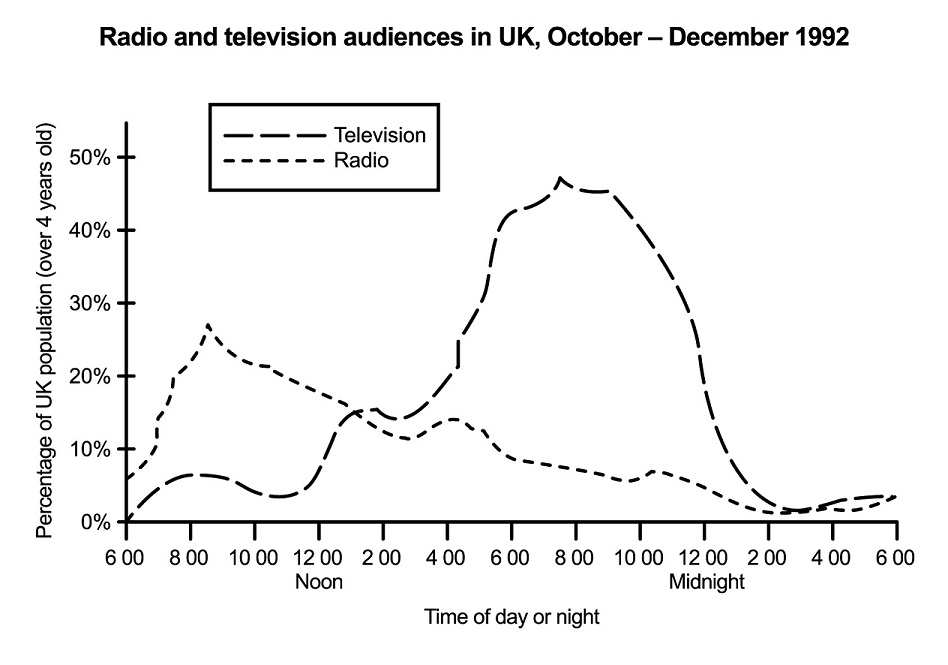
Source: Official IELTS website
Step 1 – Analyse the question
The format of every Academic Task 1 question is the same. Here is our practice question again with the words that will be included in all questions highlighted .
The graph below shows radio and television audiences throughout the day in 1992.
Every question consists of:
- Sentence 1 – A brief description of the graphic
- Sentence 2 – The instructions
- The graphic – chart, graph, table, etc.
Sentence 2 tells you what you have to do.
You must do 3 things:
1. Select the main features.
2. Write about the main features.
3. Compare the main features.
All three tasks refer to the ‘ main features ’ of the graphic. You do not have to write about everything. Just pick out 2 or 3 key features and you’ll have plenty to write about.
Step 2 – Identify the Main Features
The graphic in IELTS line graph questions should not be difficult to interpret. Each question has been created to test your language skills, not your mathematics ability.
All you are looking for are the main features. These will usually be the easiest things to spot. There will be lots of information in the graphic to help you identify them.
Here are some useful questions to ask?
- What information do the 2 axes give?
- What are the units of measurements?
- What are the time periods?
- What can you learn from the title and any labels?
- What is the most obvious trend?
- Are there any notable similarities?
(I give more detail on how to use these questions, plus downloadable checklists for identifying the main features of all 7 different types of IELTS Academic Writing Task 1 questions, in the lesson on How To Understand & Analyse Task 1 Questions .)
So, what main features stand out in our practice graphic?
Here's our IELTS line graph again.

The timeline will give you the biggest clues as to the most significant trends. Look for general trends.
There are 2 main features/trends in this line graph:
Main feature 1: The peak time for TV audiences is in the evening (8 pm).
Main feature 2: The peak time for radio audiences is in the morning (8 am).
The general trends you select will be the starting point for your essay. You will then go on to add more detail. However, with just 20 minutes allowed for Task 1, and a requirement of only 150 words, you won't be able to include many details.
We’re now ready to begin writing our essay. Here’s a reminder of the 4 part structure we’re going to use.
Step 3 – Write an Introduction
In the introduction, you should simply paraphrase the question, that is, say the same thing in a different way. You can do this by using synonyms and changing the sentence structure. For example:
Introduction (Paragraph 1):
The line graph illustrates the proportion of people in the UK who watched TV and listened to the radio over 24 hours from October to December 1992.
This is all you need to do for the introduction.
Step 4 – Write an Overview (Paragraph 2)
In the second paragraph, you should report the main features you can see in the graph, giving only general information. The detail comes later in the essay. You should also make any clear comparisons you spot.
This is where we write about the general trends. Here are the ones we picked out above.
Now form these ideas into two or three sentences with a total of around 40 words. State the information simply using synonyms where possible. No elaborate vocabulary or grammar structures are required, just the appropriate words and correct verb tenses.
For example:
Overview (Paragraph 2):
Overall, a significantly greater percentage of the TV audience watched in the evening while radio had the most listeners in the morning. Over the course of each day and night, more people watched TV than listened to the radio.
Step 5 – Write the 1st Detail Paragraph
Paragraphs 3 and 4 of your IELTS line graph essay are where you include more detailed information about the data in the graphic. In paragraph 3, you should give evidence to support your first key feature. Don’t forget to make comparisons when relevant.
Here is our first main feature again:
And this is an example of what you could write:
Paragraph 3 :
Less than 10% of people watched TV between 1 am and 12 noon but at 4 pm this figure increased rapidly, reaching a peak of almost half the population at 8 pm. After this, the graph records a sharp decline in viewers, reaching a low of only a tiny percentage by 3 am.
Step 6 – Write the 2nd Detail Paragraph
For the fourth and final paragraph, you do the same thing for your second key feature.
Here’s an example of what you could write:
Paragraph 4 :
Radio, on the other hand, shows a very different trend. The most popular time for listeners to be tuned in was just after 8 am when around 27% of the population was listening. After a brief peak, the numbers dropped steadily to barely 2%, apart from fluctuations at around 4 pm and 10.30 pm. The percentage of listeners remained low overnight before beginning a rapid ascent from 6 am to the 8 am high.
Here are the four paragraphs brought together to create our finished essay.
Finished IELTS Line Graph Essay
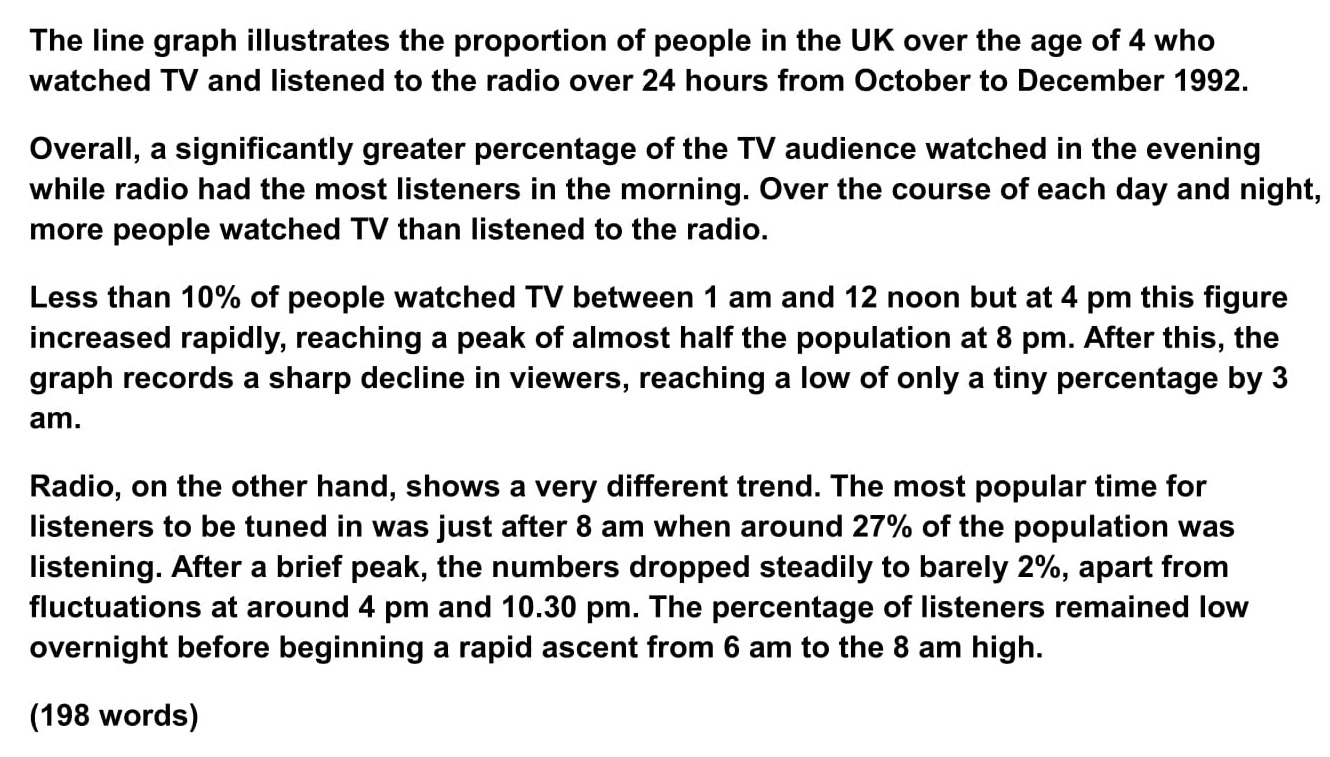
This sample IELTS line graph essay is well over the minimum word limit so you can see that you don’t have space to include very much detail at all. That’s why it is essential to select just a couple of main features to write about.
Now use what you’ve learnt in this lesson to practice answering other IELTS line graph questions. Start slowly at first and keep practicing until you can plan and write a complete essay in around 20 minutes.
Want to watch and listen to this lesson?
Click on this video.
Would you prefer to share this page with others by linking to it?
- Click on the HTML link code below.
- Copy and paste it, adding a note of your own, into your blog, a Web page, forums, a blog comment, your Facebook account, or anywhere that someone would find this page valuable.
Like this page?
Ielts academic writing task 1 – all lessons.
IELTS Academic Writing – A summary of the test including important facts, test format & assessment.
Academic Writing Task 1 – The format, the 7 question types & sample questions, assessment & marking criteria. All the key information you need to know.
Understanding Task 1 Questions – How to quickly and easily analyse and understand IELTS Writing Task 2 questions.
How To Plan a Task 1 Essay – Discover 3 reasons why you must plan, the 4 simple steps of essay planning and learn a simple 4 part essay structure.
Vocabulary for Task 1 Essays – Learn key vocabulary for a high-scoring essay. Word lists & a downloadable PDF.
Grammar for Task 1 Essays – Essential grammar for Task 1 Academic essays including, verb tenses, key sentence structures, articles & prepositions.
The 7 Question Types:
Click the links below for a step-by-step lesson on each type of Task 1 question.
- Table Chart
- Process Diagram
- Multiple Graphs
- IELTS Writing
- IELTS Line Graph
- Back To Top
* New * Grammar For IELTS Ebooks

$9.99 each Full Set Just $ 23.97
Find Out More >>
IELTS Courses

Full details...

IELTS Writing Ebook

Discount Offer
$7 each Full Set Just $ 21

Find out more >>
Testimonials
“I am very excited to have found such fabulous and detailed content. I commend your good work.” Jose M.
“Thanks for the amazing videos. These are ‘to the point’, short videos, beautifully explained with practical examples." Adari J.
"Hi Jacky, I bought a listening book from you this morning. You know what? I’m 100% satisfied. It’s super helpful. If I’d had the chance to read this book 7 years ago, my job would be very different now." Loi H.
"Hi Jacky, I recently got my IELTS results and I was pleased to discover that I got an 8.5 score. I'm firmly convinced your website and your videos played a strategic role in my preparation. I was able to improve my writing skills thanks to the effective method you provide. I also only relied on your tips regarding the reading section and I was able to get a 9! Thank you very much." Giano
“After listening to your videos, I knew I had to ditch every other IELTS tutor I'd been listening to. Your explanations are clear and easy to understand. Anyways, I took the test a few weeks ago and my result came back: Speaking 7, listening 9, Reading 8.5 and Writing 7 with an average band score of 8. Thanks, IELTS Jacky." Laide Z.
Contact
About Me
Site Map
Privacy Policy
Disclaimer
IELTS changes lives.
Let's work together so it changes yours too.
Copyright © 2024 IELT Jacky
All Right Reserved
IELTS is a registered trademark of the University of Cambridge, the British Council, and IDP Education Australia. This site and its owners are not affiliated, approved or endorsed by the University of Cambridge ESOL, the British Council, and IDP Education Australia.
Welcome Guest!
- IELTS Listening
- IELTS Reading
- IELTS Writing
- IELTS Writing Task 1
- IELTS Writing Task 2
- IELTS Speaking
- IELTS Speaking Part 1
- IELTS Speaking Part 2
- IELTS Speaking Part 3
- IELTS Practice Tests
- IELTS Listening Practice Tests
- IELTS Reading Practice Tests
- IELTS Writing Practice Tests
- IELTS Speaking Practice Tests
- All Courses
- IELTS Online Classes
- OET Online Classes
- PTE Online Classes
- CELPIP Online Classes
- Free Live Classes
- Australia PR
- Germany Job Seeker Visa
- Austria Job Seeker Visa
- Sweden Job Seeker Visa
- Study Abroad
- Student Testimonials
- Our Trainers
- IELTS Webinar
- Immigration Webinar
IELTS Writing Task 1 – Line Graph
Updated On Jan 25, 2024

Share on Whatsapp
Share on Email
Share on Linkedin

IELTS Writing Prediction Questions for 2024
IELTS line graphs
In IELTS Writing task 1 of the academic section, there will be a visual representation or a diagram on which you have to write a paragraph. One of these visual representations may be pie charts.
Sometimes, in the IELTS examination , you are asked to explain a Line graph. The IELTS line graph shows how data changes over time. These line graphs will have 2 axes, one is X-axis and another is Y-axis.
The X-axis shows the time period and the Y-axis shows what is being measured. The line graph highlights the trends when the data goes up and down. You should take only 20 minutes to complete this task and it should be a 150-word essay.
Line graph – An example:
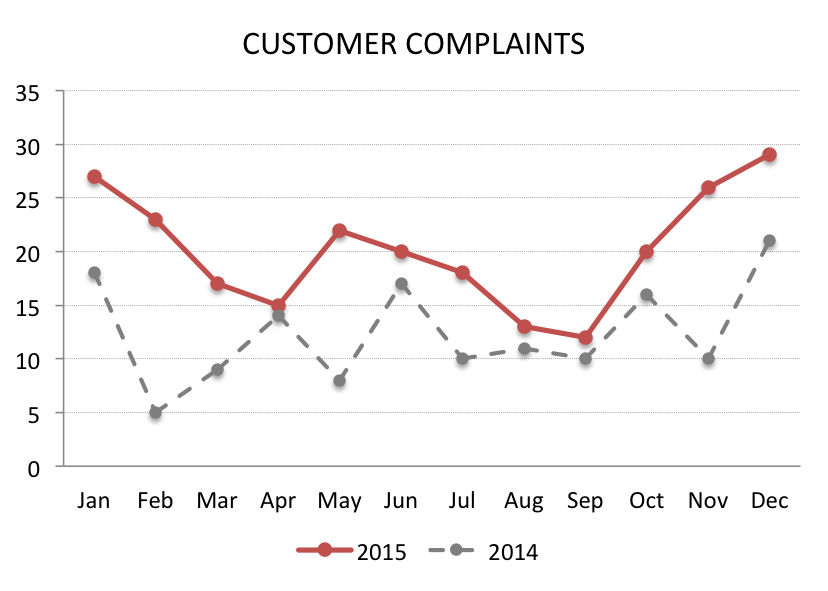
Types of Line Graphs:
There are three types of line graphs. They are:
- Simple line graph
- Multiline graph (or) Polyline graph
- Compound line graph
Simple Line Graph:
Definition: These types of graphs have just a single line plotted on them.

Sample Answer
The given image depicts a line graph representing the trend in the occurrence of X disease in Someland from 1960 to 1995.
The line graph represents the presence of X disease in Someland in varying numbers at different time intervals until it is wiped out entirely from the place.
It is clear from the line graph that the number of people affected by X disease did not cross 100 between 1960 -1965. The number of affected individuals began rising after the year 1965 and reached 200 in 1970 and 500 in 1975 respectively. The occurrence of X disease remained stagnant between 1975-1980 at 500 affected individuals. After the year 1980, the number of cases took a downward trend, falling down to almost 350 in 1985 before being completely eradicated by the year 1990. The number of people affected by X disease in Someland has been zero from 1990 till 1995.
Multiline graph (or) Polyline graph Task 1:
Definition: They are commonly used for comparison. These types of graphs have more than one line. ( on the same axis)
The graph portrays the consumption of three kinds of spread, namely, Margarine, Lowfat and reduced spreads and butter, over 26 years, from 1981 to 2007.
It is evident that butter and margarine were the primary spreads used until the introduction of low-fat and reduced spreads.
The staple spread from the early 1980s till the early 1990s was butter. The consumption of margarine followed a fluctuating trend over the years, from 1981 to 1986. The consumption decreased but then rose till 1991 and remained stagnant till 1996 after which it started declining. The use of low-fat and reduced spread began from 1996 and rose sharply from the first year till 2001 after which its preference decreased.
With regards to quantity, butter peaked at about 160 grams after which it followed a downward trend. The quantity of Margarine was within 80-100 grams for 20 years till 2001 after which it fell to 40 grams in 2007. The number of low-fat spreads crossed 80 grams in 2001 after which its consumption quantity fell.
Compound line graph:
Definition: It is an advanced version of the multi-line graph. The area between two lines is shaded indicating the size of that part.
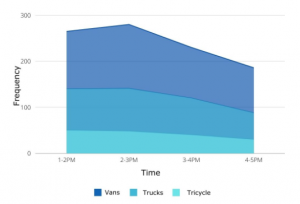
The given graph shows the frequency of three different kinds of vehicles, which are, vans, trucks and tricycles on a road at different times of the day.
It is clear from the graph that at any point in time, the number of vans on the road are the highest among the three vehicles, followed by trucks and then tricycles. The peak hour of vans and trucks falls between 2-3 pm.
The number of vans on the road increases from 1-2 pm till 2-3 pm and then gradually decreases. The number of trucks on the road remains the same till 2-3 pm after which their number also starts declining. The number of tricycles is highest at 1-2 pm and then it follows a downward trend all throughout the day.
The road in question is dominated by vans for most of the day and trucks are also quite frequent during the afternoon. The number of tricycles are less as compared to the other two types of vehicles.
Tips for IELTS Writing Task 1 Line Graph 2022
- In the introduction part, you can paraphrase the question asked or the topic of the essay.
- When you explain the overall trend, identify the main feature and explain it.
- Ensure that each paragraph has examples that are percentages or numbers to support the sentence written as an explanation.
- You can look into the various lessons available on the line graph in order to answer the complex questions.
- The last tip is to practice as much as possible so that you get a good hold on what to write in the examination when questions become complex.
- You also need to use suitable verbs, nouns, adverbs, adjectives, prepositions related to time.
Writing the exam without practicing is a waste because you will not be able to understand anything in the exam. It may become complex and test-takers may skip the question which in turn will reduce your IELTS band score .
Here are the 10 examples for the IELTS Writing Line Graph Task 1 2022:
Also check :
IELTS Writing recent actual test
Frequently Asked Questions
What is a line graph?
Is there a dedicated vocabulary for line graph?
What is trend in a graph?
What is the structure used to describe a line graph?
Is conclusion required for writing task 1 – Line graph?
Practice IELTS Writing Task 1 based on report types

Effective IELTS Essay Connectors for Writing Task 2 & Task 1
Janet had been an IELTS Trainer before she dived into the field of Content Writing. During her days of being a Trainer, Janet had written essays and sample answers which got her students an 8+ band in the IELTS Test. Her contributions to our articles have been engaging and simple to help the students understand and grasp the information with ease. Janet, born and brought up in California, had no idea about the IELTS until she moved to study in Canada. Her peers leaned to her for help as her first language was English.
Explore other sample Line Graphs
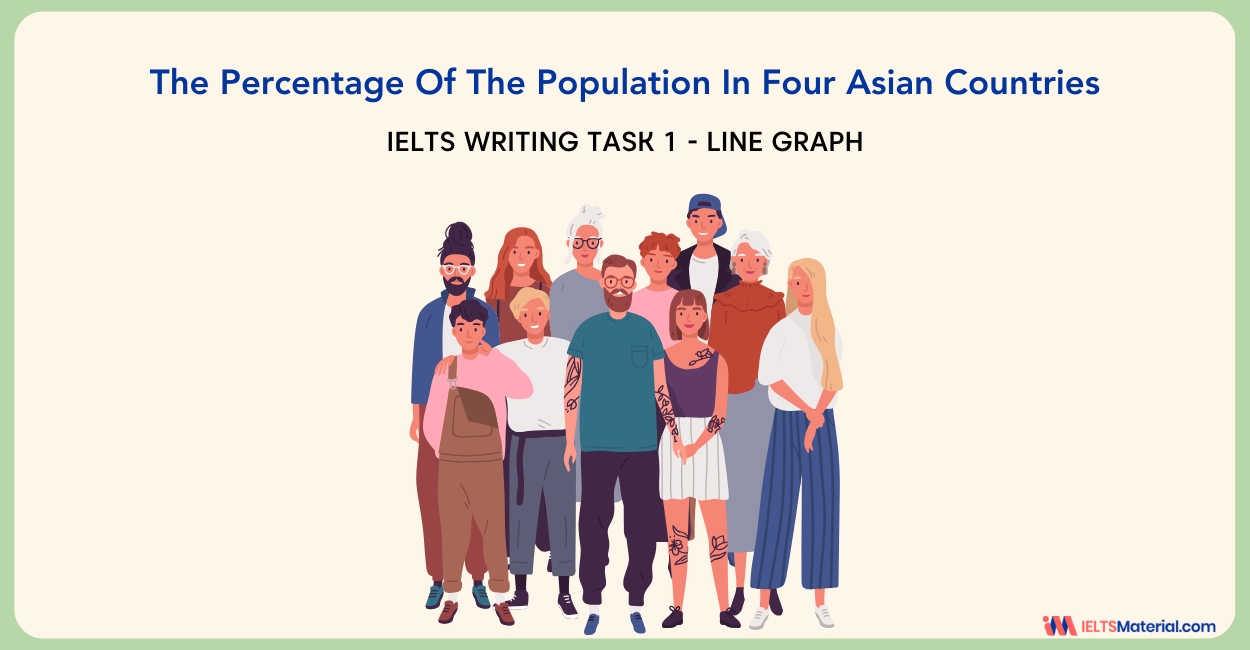
Nehasri Ravishenbagam
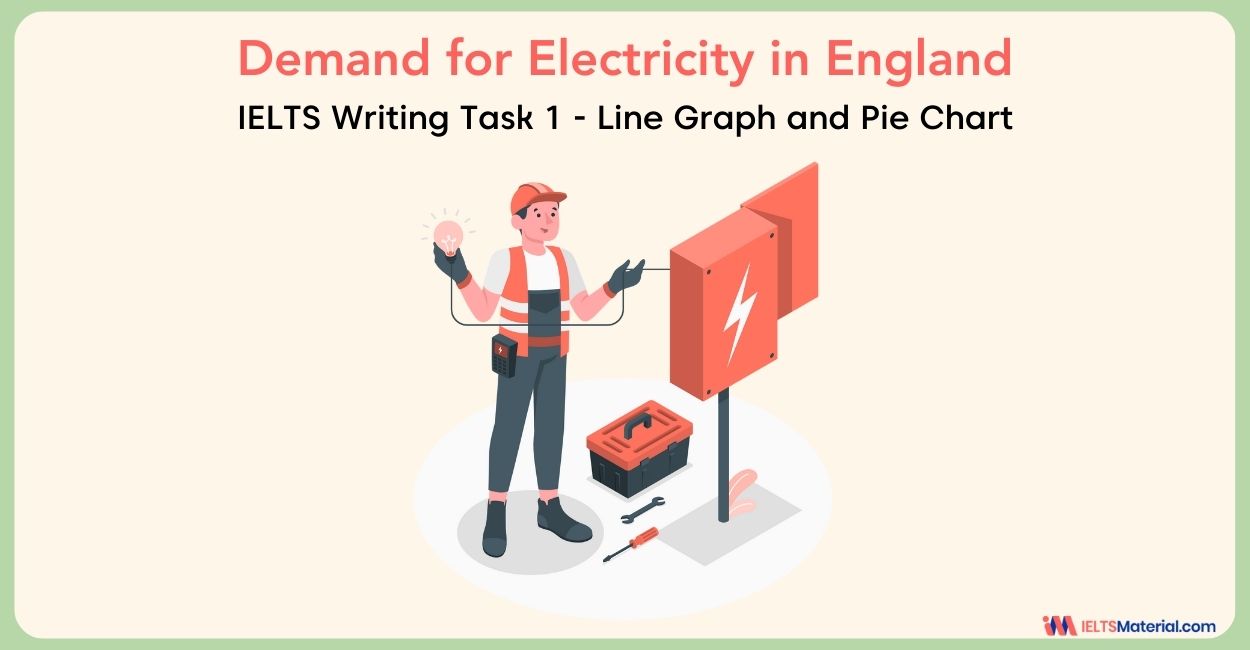
Janice Thompson

Post your Comments
Khairul Alamgir
Posted on Sep 26, 2021
Its very nice your presentation.
Recent Articles
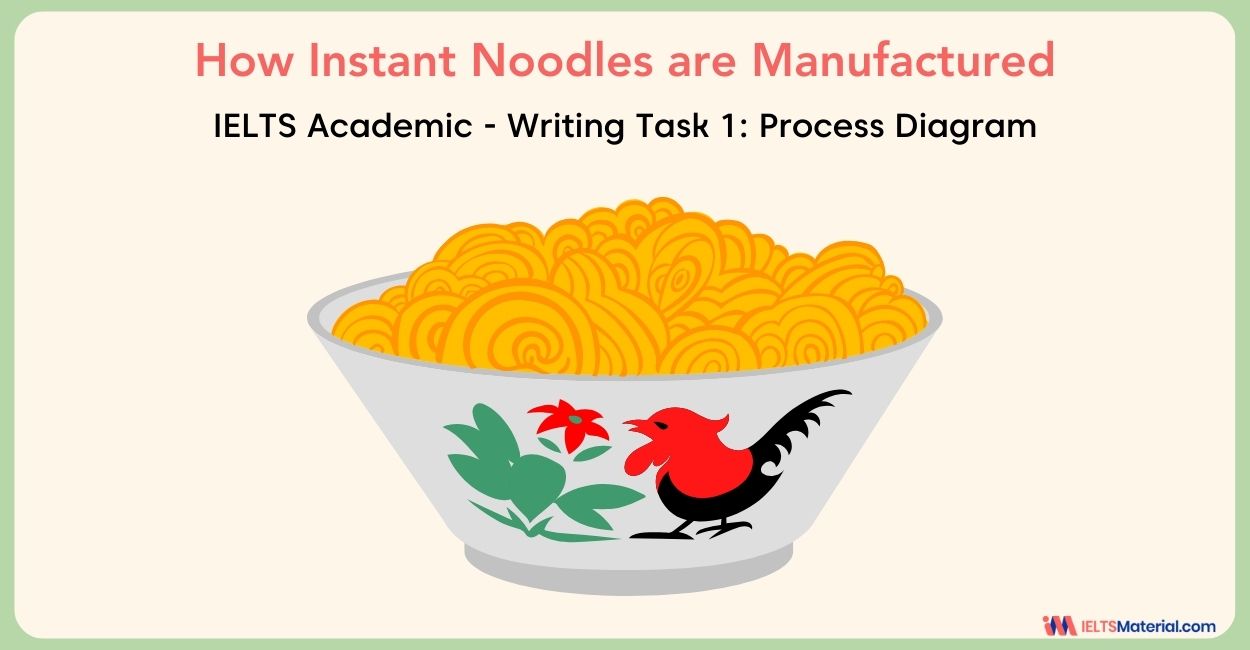
Kasturika Samanta
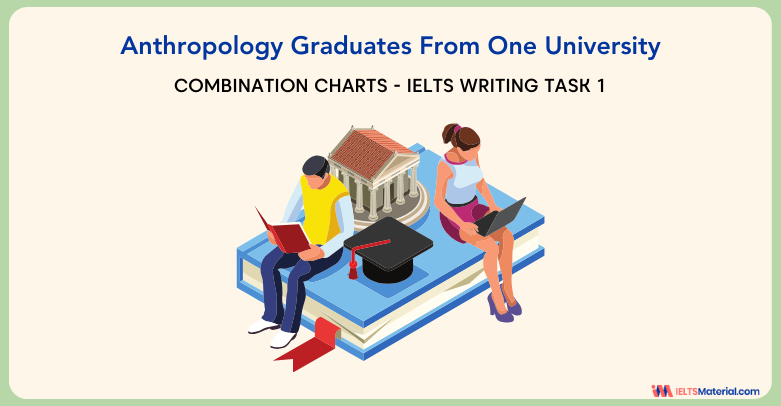
Raajdeep Saha
Our Offices
Gurgaon city scape, gurgaon bptp.
Step 1 of 3
Great going .
Get a free session from trainer
Have you taken test before?
Please select any option
Get free eBook to excel in test
Please enter Email ID
Get support from an Band 9 trainer
Please enter phone number
Already Registered?
Select a date
Please select a date
Select a time (IST Time Zone)
Please select a time
Mark Your Calendar: Free Session with Expert on
Which exam are you preparing?
Great Going!
- Skip to main content
IELTS Podcast
Pass IELTS with expert help.
Line graph example
Ielts line graph sample essay.
Home » IELTS academic task 1 » Line Graph Sample Essay
Line graphs come up often in IELTS writing part 1. We will show you how to confidently answer questions about line graphs, helping you practice summarising the data and identifying trends.
For each line graph (or line chart) question, you will need to summarise the information by selecting and reporting the main features and make comparisons where relevant. You should write at least 150 words. To make the best use of your time it’s important to write with a clear structure, focus on the most important trend or trends, choose appropriate vocabulary and avoid common mistakes.
In this tutorial, we have a band range 6.5 / 7 academic task 1 IELTS line graph example essay graded by an ex-IELTS examiner (on our team of essay correctors). There are some great examples of useful feedback to help you improve your own line chart answers.
This line graph tutorial will help you:
- Choose the right information
- Use the right sentence structures
- Decide on the perfect tense to use
Each criteria has been considered and r eviewed by one of the ex-IELTS examiners on our team. T he different sentences in the essay have been colour coded to correspond to the four marking criteria used by the British Council / IELTS IDP . At the IELTS podcast website, we also have an amazing essay correction service if you need help with your IELTS writing, so this is an example of the personalised feedback you could receive.
Make sure you understand what the codes mean:
- TR means task response – have you summarised the main information and made comparisons?
- CC is coherence and cohesion (does your essay ‘flow’ well, does it make sense?)
- LR is lexical resource (or vocabulary)
- GR means grammar
Therefore TR1 is the first comment about Task Response.
Example line graph question:
The line graph shows the average rainfall for three countries in Great Britain over a 12 month period in 2018. Summarise the information by selecting and reporting the main features, and make comparisons where relevant. Write at least 150 words
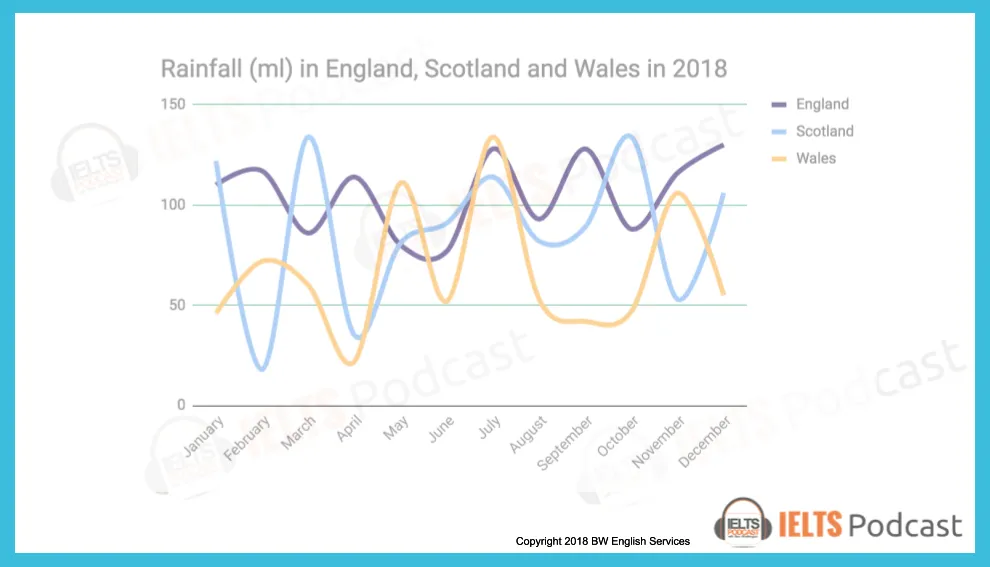
The line graph reveals the information of rainfall in three countries: England, Scotland, and Wales for one year starting from January to December in 2018.
In England, the amount of rainfall in January was recorded just above 100ml, which slightly increased in the next month by 5ml, and dipped to 90ml in March. The trend of raising and falling continue for a couple of months and reached its lowest figure in the graph for the month of June at around 70ml. After that, it is predicted that the level of rain will fluctuate and will remain around 120ml in December.
In Scotland, the amount of rain in January was 125ml, dropped unexpectedly to its lowest level to 20ml in February, and rocketed in next month to its peak value of 135ml. In April, the amounts of rain were less than 50ml, then start went up slightly until June. Then after it is predicted to drop until September, the following month it will start climbing up to October, and it will be decreased to 50 ml before reaching to 105 ml in December.
In wales, the rainfall was 50ml in January increased slightly in February and decreased to its lowest point in April around 30ml. In next month went up sharply to 110ml and dipped by 50ml in June. It is predicted that the highest amount of rain will be in July at 125ml and went down just below the month of June’s record. It will remain constant for two months before reaching 105ml in November and it will dip down in December to 52ml.
Overall it can be clearly seen that in each country the amount of rain in January will be approximately same in the month of December.
Let’s look at the essay above with ex-IELTS examiner commentary on each section.
The line graph reveals the information of rainfall (LR1) in three countries: England, Scotland, and Wales for one year starting from January to December in 2018.
TR1 – A good opening paragraph. Effective use of paraphrasing and you have included the key information.
LR1 – This could sound more natural. Perhaps ‘shows information about rainfall’, ‘shows rainfall statistics’ or ‘shows how much rain fell…’?
In England (TR2), the amount of the rainfall (GR1) in January was recorded just above 100ml, which slightly increased in next month by 5ml, and dipped to 90ml in March. The trend of raising (LR2) and falling continue (GR2) for a couple of months and reached its lowest figure in the graph for the month of June at around 70ml. After that, it is predicted that the level of rain will fluctuate and will remain (TR3) / (GR3) around 120ml in December.
TR2 – Good to adopt a systematic approach to presenting the information
GR1 – the amount of rainfall
LR2 – Check the difference between ‘rise’ and ‘raise’. GR2 – continued
TR3 – Make sure you report the information accurately.
GR3 – Stick to using past tenses here as all the information relates to 2018
In Scotland, the amount of rain in January was 125ml, dropped (CC1) unexpectedly to its lowest level to 20ml (CC2) in February, and rocketed (LR3) in next month (GR4) to its peak value (LR3) of 135ml. In April, the amounts of rain were less than 50ml, then start went up (GR5) slightly until June. Then after (CC3) it is predicted to drop until September, the following month it will start climbing up to October, and it will be decreased (TR4) / (GR6) to 50 ml before reaching to 105 ml (LR4) in December.
CC1 – You need to link your ideas together in an appropriate way. Perhaps ‘125ml, and this figure dropped…’?
CC2 – As before. Perhaps ‘… to its lowest level, 20 ml, in February’?
LR3 – Accurate use of some key language to describe graphs.
GR4 – in the next month GR5 – started to go up
CC3 – Take care with your use of linking words.
TR4 – As with the previous paragraph, make sure you report the information correctly.
GR6 – Stick to using past tenses as all the information relates to 2018.
LR4 – Omit the ‘to’ – ‘… reaching 105ml…’
In wales (GR7), the rainfall was 50ml in January increased (CC4) slightly in February and decreased to its lowest point in April (LR5) around 30ml. In next month went up sharply to 110ml and dipped (LR6) by 50ml in June. It is predicted that the highest amount of rain will be in July (TR5) / (GR8) at 125ml and went down just below the month of June’s record. It will remain constant (LR7) for two months before reaching 105ml in November and it will dip down in December to 52ml.
GR7 – Take care with your use of punctuation. Use a capital letter for the name of a country.
CC4 – You need to be careful with the way you link your ideas together. Perhaps ‘… in January and this figure increased…’?
LR5 – Very natural use of language.
LR6 – Good to incorporate a wide range of appropriate vocabulary.
TR5 – As before, you need to report the information accurately.
GR8 – As in the previous paragraphs, this is an inappropriate use of tenses.
LR7 – Despite the problems with tenses, this vocabulary is appropriately selected.
Overall it can be clearly seen that (CC5) in each country the amount of rain in January will be (TR6) / (GR9) approximately same in the month of December. (TR7)
CC5 – On the right track to introduce the main features of the graph.
TR6 – As before, there are problems with task achievement.
GR9 – Inappropriate use of tenses.
TR7 – I think this paragraph is intended to be your overview? If so, this would be a useful area to work on as it is one of the key differences between a ‘6’ and a ‘7’ for task achievement.
PROBABLE IELTS SCORE: 6.5 / 7.0
Some final practical advice for answering line chart questions in your IELTS test:
- Do not start writing before giving yourself enough time to think. First decide the language you will need in your answer. Give yourself 5 minutes to look, think and plan.
- Study the line graph carefully: be clear about the topic and what each line represents.
- The labels on the axes will give you useful information. Look at the horizontal axis to understand the period of time shown, and the vertical or x axis to see how the data is shown (in centimetres, in dollars, in millions?)
- Check the time frames very carefully in the line and plan how time differences will affect your choice of verb tenses.
- What is the main trend or trends?
- The easiest way to make comparisons is by using superlatives in your answer. For example: comparing the largest and smallest amounts of rainfall by country or comparing the least and most expensive products over time.
- Say how two or more lines are related – do they both increase over time? Are any points connected?
- Finally, make sure you have included an overview!
Audio tutorial with transcript
You can download or listen to the audio version here:
| Direct Download Here | Stitcher | iTunes | Spotify | Soundcloud | Transcript |
IELTS task 1 line graph video tutorial
More useful IELTS Academic Task 1 lessons:
- Academic Task 1 Sample Essays
- How to describe a pie chart
- Bar Chart IELTS
- How to describe a map
- Describe an image
- Describe a natural process
- How to describe a table
- How to paraphrase
- Line graph sample answer
- Marking criteria for Task 1
- Map vocabulary for IELTS Task 1
- How to describe a flow chart
- Essential skills for Task 1
- How to get band 9 for academic task 1
- How to describe a process diagram
Podcast: Play in new window | Download
- IELTS Scores
- Life Skills Test
- Find a Test Centre
- Alternatives to IELTS
- Find Student Housing
- General Training
- Academic Word List
- Topic Vocabulary
- Collocation
- Phrasal Verbs
- Writing eBooks
- Reading eBook
- All eBooks & Courses
- Sample Graphs
- Line Graph Examples
IELTS Line Graph Examples
Continuing with the sites IELTS line graph examples, this is an example of a line graph comparing car theft.
It's important to organise your graph clearly, draw out the key trends and make comparisons.
That has been done well in this answer.
You should spend about 20 minutes on this task.
The line graph shows thefts per thousand vehicles in four countries between 1990 and 1999.
Summarize the information by selecting and reporting the main features and make comparisons where relevant.
Write at least 150 words.
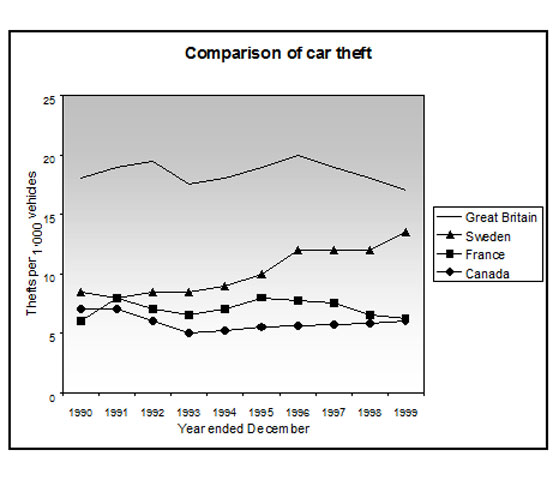
IELTS Line Graph Examples - Model Answer
The line graph compares the number of cars stolen for every 1000 vehicles in four countries from 1990 to 1999. Overall, it can be seen that car thefts were far higher in Great Britain than in the other three counties throughout the whole time frame.
To begin, car thefts in Sweden, France and Canada followed a fairly similar pattern over the first five years, all remaining at between 5 and 10 per thousand. The general trend though for France and Canada was a decline in the number of vehicles stolen over the period, with both at around 6 in 1999. In contrast, Sweden experienced an upward trend, starting the period at approximately 8, and finishing at just under 15.
Interestingly, car thefts in Great Britain started at 18 per thousand, which far exceeded that of the other countries. It then fluctuated over the next nine years, reaching a peak of 20 thefts per 1000 in 1996, and ending the period slightly lower than where it began, at approximately 17 per thousand.
(Words 174)
This graph would score highly in the IELTS test.
The graph starts with an overview that highlights the key information presented in the graph.
It has also been organised very clearly around the main trends.
The first body paragraph describes Sweden, France and Canada together as they follow a very similar pattern, whereas Great Britain is discussed separately in the second body paragraph as this follows a very different pattern.
This makes the description easy to follow and read and shows the writer has been able to make comparisons of the data.
There is also a good range of vocabulary and accurate grammar.
<<< Back
Next >>>
More on IELTS Line Graphs:
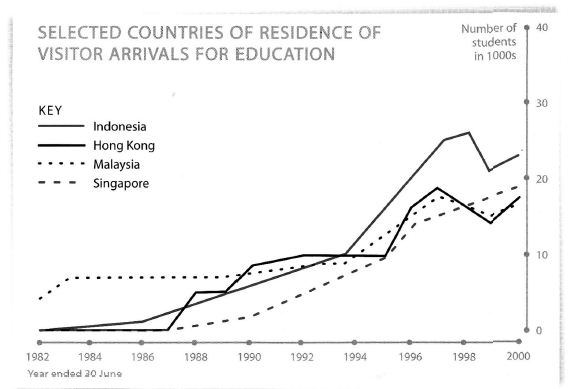
Tips for Organising an IELTS Line Graph
Organising an IELTS Line Graph - This lesson shows you have to improve the coherency of your graph in order to achieve a high band score.
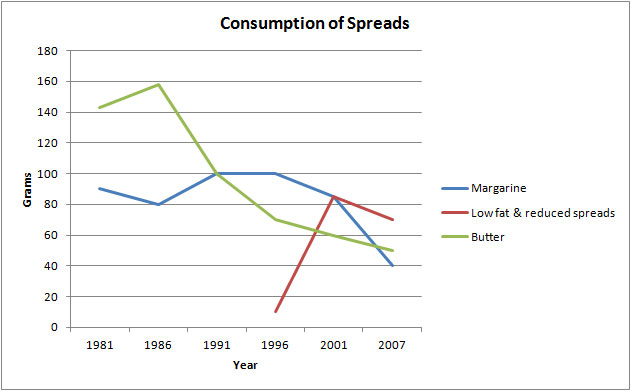
IELTS Line Graph Worksheet: Practice the language of change
IELTS Line Graph Worksheet - this is a gap fill to help you practice the language of change for IELTS graphs over time.
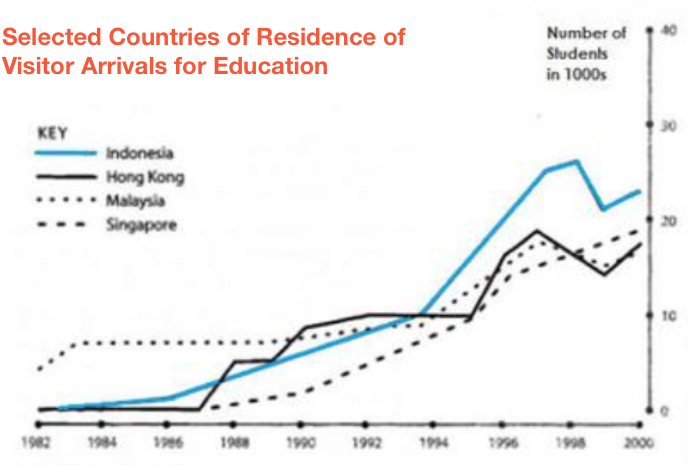
IELTS Sample Line Graph
This is an IELTS Sample Line Graph with model answer that you can use to help you prepare to write your answer for a task 1 that describes changes over time.
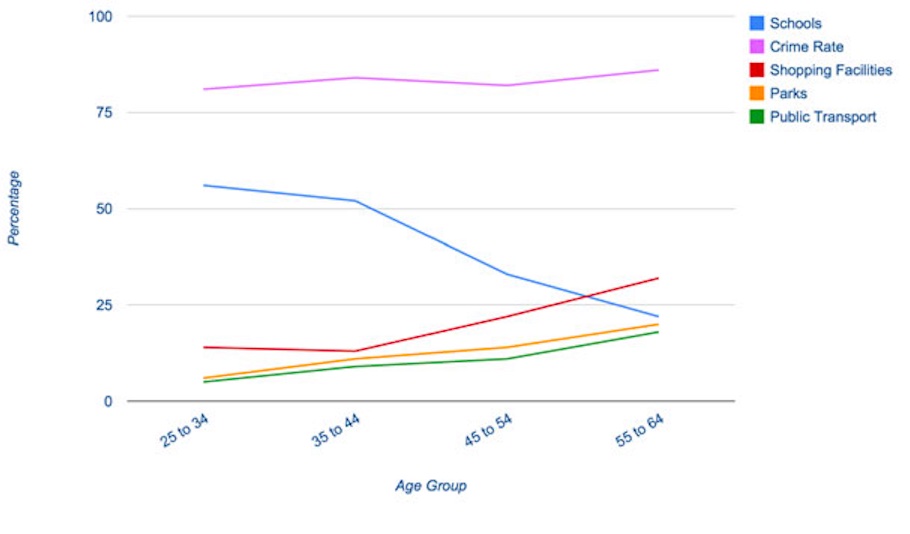
IELTS Task 1 Line Graph Structure Using Groups
For an IELTS Task 1 Line Graph there are different ways to organise your answer. Grouping information is a good way to get a logically structured response.

Line Graph Quiz
Line Graph Quiz: Have a go at this fun quiz to help you find out what you know about graphs and to help you improve your IELTS score.
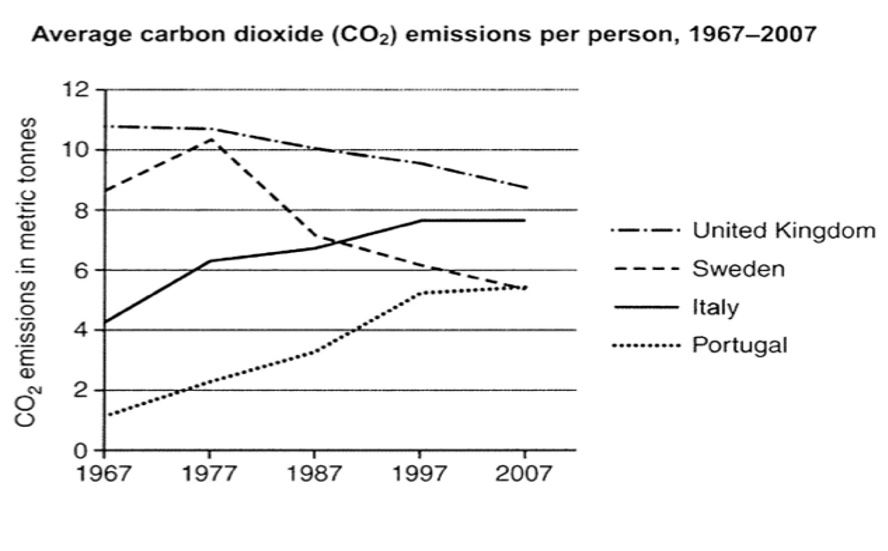
IELTS Line Graph Sample Answer: Average carbon dioxide (Co2) emissions
View an IELTS line graph sample answer that would score highly in the exam. It's well organised and covers all the requirements of the task.
Any comments or questions about this page or about IELTS? Post them here. Your email will not be published or shared.
Before you go...
Check out the ielts buddy band 7+ ebooks & courses.

Would you prefer to share this page with others by linking to it?
- Click on the HTML link code below.
- Copy and paste it, adding a note of your own, into your blog, a Web page, forums, a blog comment, your Facebook account, or anywhere that someone would find this page valuable.
Band 7+ eBooks
"I think these eBooks are FANTASTIC!!! I know that's not academic language, but it's the truth!"
Linda, from Italy, Scored Band 7.5

IELTS Modules:
Other resources:.
- All Lessons
- Band Score Calculator
- Writing Feedback
- Speaking Feedback
- Teacher Resources
- Free Downloads
- Recent Essay Exam Questions
- Books for IELTS Prep
- Student Housing
- Useful Links

Recent Articles
Decreasing House Sizes Essay
Apr 06, 24 10:22 AM

Latest IELTS Writing Topics - Recent Exam Questions
Apr 04, 24 02:36 AM

IELTS Essay: English as a Global Language
Apr 03, 24 03:49 PM

Important pages
IELTS Writing IELTS Speaking IELTS Listening IELTS Reading All Lessons Vocabulary Academic Task 1 Academic Task 2 Practice Tests
Connect with us
Copyright © 2022- IELTSbuddy All Rights Reserved
IELTS is a registered trademark of University of Cambridge, the British Council, and IDP Education Australia. This site and its owners are not affiliated, approved or endorsed by the University of Cambridge ESOL, the British Council, and IDP Education Australia.

Press ESC to close

IELTS Writing Task 1 Line Graph Examples: Here’s a Guide to Master the IELTS Essays
One of the most popular essay topics in the IELTS writing task 1 is explaining the line graph. This is a type of essay where you will have to explain the data given in the form of line graphs. This task is particular to the academic writing and the general candidates need not worry about this.
As you must know that the IELTS writing task 1 line graph is the shorter of the two tasks and needs to be written in 150 words at least. It is also necessary that you finish this task in no more than 20 minutes, as the second task is lengthier and as such, requires more time. Let us get into the details of line graph essays.
Skills Tested in IELTS Task 1
In IELTS writing task 1, you will be asked to describe facts or figures presented in one or more graphs, charts or tables on a related topic; or they may be given a diagram of a machine, a device or a process and asked to explain how it works.
Important Points
You must write in an academic or semi-formal/ neutral style and include the most important and the most relevant points in the diagram.
This task assesses your ability to identify the most important and relevant information and trends in a graph, chart, table or diagram, and to give a well-organised overview of it using language accurately in an academic style.
You will also be judged on how appropriately, accurately and relevantly the response fulfils the requirements set out in the task, using the minimum of 150 words.
Further Assessment
- You will be assessed on how your response organises and links information, ideas and language with appropriate use of cohesive devices (for example, logical connectors, pronouns and conjunctions) to assist in making the conceptual and referential relationships between and within sentences clear.
- You will also be judged on your use of a range of vocabulary and grammatical devices and its accuracy in terms of the specific task.
How to Structure IELTS Writing Task 1 Line Graph Essays?
Structuring a line graph essay is not a big deal. All you need to remember is that you do not need a conclusion here. As this isn’t a discursive essay, so conclusions do not serve any purpose. Here is an IELTS sample essay to know how you can structure a line graph essay:
Paragraph 1 (Introduction)
- Sentence 1- Paraphrase Question
This paragraph should be one sentence long and demonstrates your ability to paraphrase. You should do this by using synonyms.
Paragraph 2 (Overview)
- Sentence 1- Overview of the first main feature
- Sentence 2- Overview of the second main feature
- Sentence 3- Make general comparison, if appropriate
An overview is a general statement, highlighting the most important information in the table. It should not include any numbers. This is just a summary of the main features. You can use numbers to support your answer in paragraphs 3 and 4.
The examiner is testing your ability to identify the most important information and then summarise it. Important information could include general trends, increase/ decreases, differences, comparisons etc.
Paragraph 3 (Details of significant feature 1)
- Sentence 1- Supporting details
- Sentence 2- Supporting details
- Sentence 3- Supporting details/ comparison details, if appropriate
In this paragraph, you take the first general statement from paragraph 2 and support it with details from the graph. The examiner is looking for your ability to choose the correct data and ability to describe data, trends, comparisons etc.
You then repeat this process for paragraph 4, only this time you describe the second sentence in paragraph 2.
Paragraph 4 (Details of significant feature 2)
There may also be three significant features, in which case you can adjust the structure slightly.
You must remember not to write a conclusion. Conclusions are for opinion or discursive essays and you are not expected to do this in task 1.
Also Read : 9 Practical IELTS Letter Writing Tips: Guide to General & Academic Writing
IELTS Writing Task 1 Line Graph Example Essay Question

Source: Cambridge English IELTS Past Papers.
The IELTS writing task 1 line graph gives information from a 2008 report about the consumption of energy in the USA since 1980 with projections until 2030.
Summarise the information by selecting and reporting the main features, and making comparisons where relevant.
IELTS Sample Essays Answer
The line graph shows energy consumption by fuel type in the United States from 1980-2008, with projected use until 2030.
Overall, fossil fuels have been the dominant type and will continue this trend into the future. Nuclear and renewable energy sources have represented a small but significant proportion of total energy use and despite small projected gains; it is projected that they will continue doing so.
Main Information
Petrol and Oil commanded the biggest share with 35 quadrillion units (35q) in 1980, rising to approximately 40q in 2008 and this trend is set to continue with a projected value of nearly 50q in 2030. In 1980 natural gas and coal came in second and third, with around 16q and 20q respectively. However, coal overtook natural gas in 1990 and despite some fluctuation, is set to be the second most used fuel in 2030 with just over 30q. It is predicted that natural gas will level off and remain relatively constant at about 25q.
Nuclear and the renewable energies all represented around 4q in 1980 and fluctuated up until 2008. It is speculated that nuclear energy will reach 10q by 2030 and solar/wind around 5q, with hydropower dropping and then remaining constant at approximately 2q.
Academic writing task 1 is a writing task which has a defined input and a largely predictable output. It is basically an information-transfer task that relates narrowly to the factual content of an input diagram and not to speculative explanations that lie outside the given data.
You can take help of any good IELTS online training programs for enhancing your skills in this topic. A proper IELTS online preparation will help you with the most important part and that is choosing the correct information. If you know what to put into the essay and have a concrete structure, you are absolutely good to go!
Also Read : Duolingo Test Scores Explained: Comparison with IELTS and TOEFL

One Comment
I was looking for this article for the preparation of graphs and how to write essays, this was very useful, what are you looking for?
Leave a Reply Cancel reply

Share Article:
About the Author
Indulekha prabha.
My name is Indulekha Prabha. I am an English teacher and a content writer by profession. When I'm not working you can find me writing fiction, reading poetry and painting.
You might also like

Describe Something Important that has been Kept in Your Family: A Cue Card Sample Topic for IELTS Speaking

How to Use an IELTS Calculator? Calculate Your Overall IELTS Exam Score

What is a Good IELTS Score? Is 7.5 a Good IELTS Score? Here’s All You Need to Know
Other stories, top ielts classes in ambala: all you need to know to score better, how to sound more confident in the ielts speaking test effective speaking practice guide.
IELTS Line Graph (Writing Task One Academic)
Line graphs are the most common IELTS academic task one question type. They can also be one of the hardest types to answer. On this page, you can check out my sample answer for an especially tricky line graph question and find out why it is worth a band nine.
IELTS Line Graph Band Nine Sample Answer
This question below is my band nine answer for a fairly famous task one question. Once you’ve finished, keep scrolling to find out why it would get a band nine and for some extra tips.
The graph below shows the population of India and China from the year 2000 to the present day with projections for growth to the year 2050. Summarise the information by selecting and reporting the main features, and make comparisons where relevant.
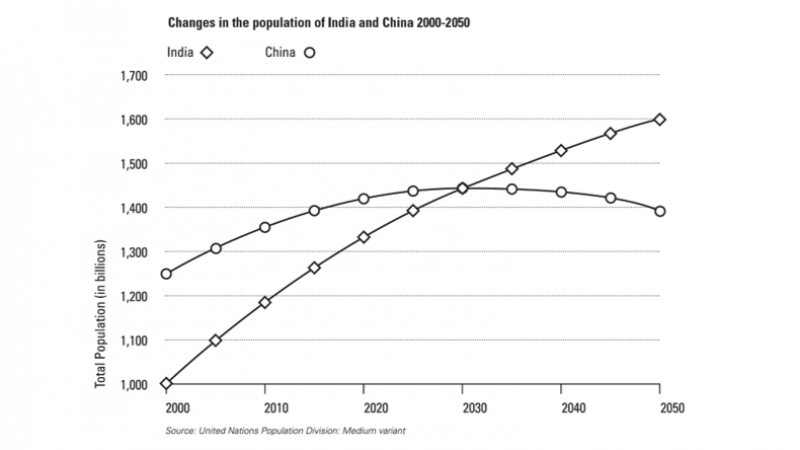
This graph demonstrates how the number of people in China and India have and will change over time. The graph starts with historical data going back to the year 2000 and continues with predictions up to 2050.
Overall, the population of India will overtake that of China in 2030 and continue to grow through to 2050. Meanwhile, China’s population will peak in the late 2020s before gradually declining.
At the beginning of the graph, in the year 2000, the population of China was 1.25 billion people. According to the graph, this has been growing and will continue to grow to a peak of just over 1.4 billion. After this time, the population will begin to steadily decline, reaching a low point of just under 1.4 billion by 2050.
On the other hand, the population of India has been increasing steadily since the year 2000 and will continue to grow into 2050. In the year 2000, the population of India was 1 billion, far lower than China’s. India’s population will overtake China’s in 2030 when both are just over 1.4 billion people. Its population will continue to grow to 1.6 billion in the year 2050, although this growth will become more gradual over time.
Why is this essay band nine?
At first glance, this looks like quite a hard line graph to write about. After all, you only have two lines to talk about, which means some test takers could run out of things to say. To make things worse, the tenses used to describe this graph are quite complex.
Using perfect continuous tense
When we want to describe something that has been happening non stop for an extended period of time and which are still happening now, we can use the present perfect continuous tense. We often use this tense with ‘for’ and ‘since’. For example:
- I have been living in London since 2020.
- They have been studying hard for the IELTS exam for a year.
- She has been watching that TV show for the last five hours.
To be honest, this is quite a rare tense, but it comes in handy for questions like this. In the essay, I’ve used it for:
- According to the graph, this has been growing and will continue to grow to a peak of just over 1.4 billion.
- On the other hand, the population of India has been increasing steadily since the year 2000 and will continue to grow into 2050.
For both of these sentences, I’ve combined the present continuous with the future tense. This is less clunky than something like ‘The population of India, has grown, is growing and will grow.’
Good Task One Structure
The structure of this answer is exactly how it should be. It has:
- An introduction telling you what the graph is about.
- An overview which gives the key points without going into detail or giving any numbers.
- Two body paragraphs both with a clearly defined topic.
Related posts
How to answer line graph essay in IELTS writing task 1 Academics
- IELTS Writing Academics Task 1
Line graph accounts for one of the most popular essay topics in the IELTS writing task 1. In this type of essay, you have to explain the data given in the form of line graphs.
This type of task is particularly asked in academic writing not in general. So, if you are preparing for the IELTS general writing, then you can skip the essay.
The line graph essay in IELTS writing task 1 Academics requires you to write an essay in atleast 150 words. Also, it is required of you to finish off the task within 20 minutes.
Here in this article, we are going to talk about what line graph essays are and how you should answer them to achieve the desired band score.
What is a Line graph essay?
A line graph can be used to show the change in the phenomenon over time. These types of graphs can be used while plotting the data that have peaks (ups) and troughs. In other words, the line graph helps in highlighting the trends.
What is the main purpose of a line graph?
The main purpose of the line graph is to determine the relationship between two sets of values. In this, one data set is dependent on the other.
In the IELTS writing task 1, you will be required to describe facts or figures presented in one or more graphs, charts, or the topic. You can be asked to explain a diagram, a device, or a process, as to how it works or functions.
Part 1- part 1 includes the information given in the graph and the question.
Part 2- You should utilize this information to make comparisons and connect the parts of information to develop your answer.
Part 3- the graphics (line graph)
What is the aim of the Line Graph essay test?
The line graph essay task in the IELTS writing section 1 assesses your ability to identify the most important and relevant trends and information in the graph and to give a well-organized overview of it using the right tense and vocabulary.
You will be judged based on how creatively you link the information, language, range of vocabulary used, and its accuracy in terms of the task, and appropriate use of cohesive devices.
Instead of just filling the gaps, focus on relevancy.
Look for how appropriate your answer is to the question.
Structure of Line Graph Essay
The structure is the soul of any essay. Therefore, to confirm your 8+ score in the IELTS writing task 1 Academics, you need to develop a perfect structure of the graph based on your understanding of the question.
-621994373.png)
Introduction: In the introductory paragraph, you should paraphrase the question. The introductory paragraph should be a captivating one. While writing the introduction, include the main points and an overview of both the points.
Overview: Under overview, you can present your understanding of the whole topic and compare the points to stress your point.
Body Paragraph 1: You can discuss the first main issue in paragraph 1.
Body paragraph 2: Discuss the second main issue without breaking the momentum of the essay.
Marking Criteria of the IELTS Writing test
- Task Achievement
- Coherence and Cohesion
- Lexical Resource and Vocabulary
- Grammar Range and Accuracy
How to plan your IELTS Writing Task 1?
1. Analyze the question It is the first step to framing your answer in the IELTS Writing task1 Academics. Read the question; understand the type of question, figures, and axis to frame your answers.
2. Identify the main features For distinguishing the theme and the context, you need to identify the main features in the graph question. Pick 2-3 important trends and elaborate on the same to frame your answers.
3. Brainstorm the ideas and vocabulary Essay writing requires you to be calm and frame your strategy. You have to explain your point with atleast 150 words. Therefore, the usage of the right vocabulary and organization of ideas is critical at this stage.
Common Mistakes to Avoid in Line Graph essay test
- Incomplete data analysis
- Writing an explanation of the data
- Not writing an overview
- Mentioning each detail
- Exceeding word limit
- Illogical structure
- Not planning before writing
To conclude, an academic writing task is a task with defined input and output. It is an information transfer task that relates mainly to the factual content of imputing the diagram.
The assistance of good online training programs like Unlock IELTS with Richa will help you with cracking the IELTS Writing task 1 Academics and help you frame answers that fetch your desired score.

Get Free Ebook
Enroll for Free Last Day Strategies

Related Posts

Last Day Strategies : IELTS Writing (Academics)

How to answer table chart essay in IELTS writing task 1 Academics

IELTS writing task 1 Academics: Understanding coherence and cohesion marking criteria

How to Answer Pie Chart Essay in IELTS Writing Task 1 Academics

Understanding Task Achievement Marking criteria in IELTS writing task 1 Academics

Recent Posts

UnlockIelts- Designed for Your Success

Unlock your inner potential – How ‘Unlockielts’ makes it happen for you.

'Crushing The Curve': A Study Plan For Spectacular Results In Unlickielts Courses

'UnlockIELTS' Partner Program - Helping Others Meet Their English Language Goals!

Top 10 Myths About Preparing for the ILETS Exam Debunked

'Unlock' Your Score Today - Access Latest Tools and Techniques for Aceing IELTS Exam!
Frequently asked questions, 1) how to answer ielts academic questions task 1 for line graphs, 2) how to summarize a line graph, 3) what are some tips to crack the ielts task 1 line graph 2020, 4) how to improve ielts writing task 1 line graph vocabulary, 5 ) how do you describe a line graph trend, of , how would you rate this course overall, write a public review.
- Richa Raj
Study Abroad
Scholarships
IELTS Writing Task 1: Line Graph
Updated on Mar 08, 2024, 11:00
Line graphs or line charts are part of the IELTS Writing Task 1 questions. Though these graphs may seem slightly more complex, they’re pretty simple to understand when you learn how to!
Chart, diagram and map questions just need a few techniques to crack. That’s what we’re here to help you with.
On this page, we’ll equip you with the best strategies to solve IELTS Line Graph Task 1 essays! Let’s get started.
On This Page

1. IELTS Writing Line Graph Task 1: How to Answer
Line graphs or Line charts are periodical graphs and show values of constants over a time.

2. IELTS Writing Line Graph Task 1: Sample Answer
Use these samples to hone your writing task 1 skills! Let’s begin.
More for you
Boost your IELTS Writing score
See how to score 8+ in Listening.
Get proven strategies to ace your IELTS Listening test.
IELTS Writing Line Graph Task 1: How to Answer
Line graphs or Line charts are periodical graphs. Which means they show values of two constants over a period of time. These graphs usually indicate the pattern of growth of the given subjects.
Line graphs can be increasing, decreasing or stable. As a part of your task, you must analyse the given line chart and deduce your observations, highlights and comparisons. This task mainly focuses on comprehending how well you can analyse and process information.
You have 20 minutes to solve these questions, and you must do it in a minimum of 150 words.
Here are some strategies to answer Line graph task 1 essays.
Analyse the Line Graph
Examine the task at hand. Take a few seconds to thoroughly go through and prepare for what is asked in the question. A question may look like this:
- The graph below shows average carbon dioxide (Co2) emissions per person in the United Kingdom, Sweden, Italy and Portugal between 1967 to 2007 .
- Summarise the information by selecting and reporting the main features, and make comparisons where relevant.
Pay attention to what is being asked of you. For instance, in this question, you are asked to summarise the information, highlight the main features, and make comparisons. It’s good to sketch out a structure before you start writing mentally.
Here’s how you can analyse the Line graph:
- Read and understand the labels on both sides of the axis. Understand the context. What does the graph represent?
- Look for any trends or patterns. Is the graph declining? Is it flat? Is it inclining? These observations are important as these elements will be your main features.
- Also, pay attention to sudden peaks, valleys (drops), or fluctuations. This will also be your main feature.
- You must look for the lows and highs in the trend, as these are good data points.
- When you analyse the trends, especially if you’re drawing comparisons, you must consider how they affect each other and if they are in a relationship. For example, does line A also drop when line B drops? Or is it vice versa?
Structuring Your Summary
Writing a summary for a line chart is very similar to that of a table, bar, and pie chart. Follow the same rule: Write an introduction, write the highlights, and conclude your essay.
- Introduction: Begin by rephrasing the question and providing context for the line graph. Mention the titles, the data source (if provided), and the time frame covered by the graph.
- Overview: Briefly highlight the main trends or patterns visible in the line graph. Identify any significant peaks, valleys, or fluctuations in the data. Keep this section concise and avoid unnecessary elaboration.
- Detailed Analysis: Break down the data presented in the line graph by examining each trend or pattern in detail. Describe the direction and magnitude of each trend over time. Use specific data points or values from the graph to support your analysis. Compare and contrast the trends between different variables or categories if applicable.
- Conclusion: Summarise the main features, patterns, or trends observed in the line graph. Reflect on the significance of these findings and consider their implications. Review the summary for accuracy, grammar, punctuation, and spelling.
IELTS Writing Line Graph Task 1: Sample Answer
Practice makes perfect, they say. And we agree entirely. Use these samples to hone your writing task 1 skills! Let’s begin.
- This graph shows the proportion of four materials recycled from 1982 to 2010 in a particular country.
- Summarise the information by selecting and reporting the main features making comparisons where relevant.
Sample Essay:
The graph illustrates the percentage of recycled plastics, aluminium cans, glass containers, paper and cardboard from 1982 to 2010. It shows the highest and lowest dips of all the four categories.
According to the graph, In 1982,65% of paper and cardboard was recycled, which increased in 1994 to 80% and later declined to 70%. In 1982,50% of glass containers were recycled, which fell to 40% in 1990; however, the glass containers recycling was inclined to 60% by 2010.
Plastic recycling was introduced in 1990 at only 2%, and the graph shows that the growth was prolonged, from 2% to 9% over time. Aluminium cans were first recycled in 1986 at about only 5% but grew to 45% in 2010.
Overall, paper and cardboard saw the highest leap among all the other recycling materials. But this category saw a decline in 1990, and an upward trend was evident in the graph.
IELTS Writing Practice Test
IELTS Writing Task 1: Diagram
IELTS Writing Task 1: Pie Chart
IELTS Writing Task 1: Map
IELTS Writing Task 1: Table Chart
IELTS Writing Task 1: Bar Graph
IELTS Important Information
IELTS Exam Date
IELTS Exam Fee
IELTS Modules
IELTS Listening Practice Test
IELTS Speaking Practice Test
IELTS Reading Practice Test
IELTS Test Centres
IELTS Results
Types of IELTS
IELTS Pattern
IELTS Exam Eligibilty
IELTS Slot Booking
IELTS Band Score
IELTS Registration
IELTS Books
IELTS Preparation
IELTS Practice Test
IELTS Accepting Countries
Study In USA
Study In Canada
Study In UK
Study In Australia
Study In Ireland
IELTS Accepting Universities
Massachusetts Institute Of Technology
The University Of British Columbia
Harvard University
University Of Toronto
Conestoga College
University Of East London
Stanford University
University Of Alberta
Coventry University
New York University
Read More about IELTS Practice Test
IELTS Speaking Cue Card
IELTS Speaking Part 1
IELTS Writing Task 1
IELTS Writing Task 2
Task 1 Pie Chart
Task 1 Table Chart
Task 1 Bar Graph
Task 1 Line Graph
Task 1 Diagram
IELTS Test Centre and Dates in India
IELTS Test Centre and Dates in Hyderabad
IELTS Test Centre and Dates in Bangalore
IELTS Test Centre and Dates in Chennai
IELTS Test Centre and Dates in Amritsar
IELTS Centre and Dates in Ludhiana
IELTS Test Centre and Dates in Mumbai
IELTS Test Centres and Dates in Ahmedabad
IELTS Centre and Dates in Delhi
IELTS Test Centres and Dates in Chandigarh
IELTS Center and Dates in Pune
Related Articles

Q. How do you explain a line graph in IELTS?
A. To explain a line graph, you must first analyse it thoroughly. Here are a few techniques you can use to analyse the line graph:
- Go through the labels on both axes.
- Compare and contrast if you have more than one line in the graph.
- Look for patterns in the trend
- Notice how the graph declines, inclines and falls flat
Once you have analysed the graph, you can describe it in your essay.
Q. How do you summarise a line graph?
A. To summarise the line graph, start with a clear introduction. Your introduction must be a paraphrase of the question given to you. You can then highlight the most important elements in the graphs. Write about the sudden peaks in the line graph and the downfalls. Support it with some context. You can say: Why did it happen? Provide comparisons if required, and conclude your essay.
Q. What are the features of a line graph?
A. Line graphs commonly contain two axes, one horizontal and one vertical. Each axes will contain data points that are joined together by a line. Usually these graphs depict the variation of a certain information over a period of time.

- A Beginner’s Guide to IELTS
- Common Grammar Mistakes [for IELTS Writing Candidates]
Writing Correction Service
- Free IELTS Resources
- Practice Speaking Test
Select Page
Describing an IELTS Line Graph [An Annotated Sample Answer]
Posted by David S. Wills | Mar 13, 2023 | Model Essays | 0
In task 1 of the IELTS writing test, you could be asked to describe a line graph. This is actually very common and so it’s really important that you can do this well.
Today, I am going to show you a typical IELTS line graph and then give you some advice on how to describe it effectively. This will include my own sample band 9 answer, which I will annotate so that you can more easily understand it.
You can read my full guide to describing line graphs here .
The Line Graph – Bakery Sales
Here is our line graph for today:
The graph below gives information about the sales of the three most commonly purchased items in a particular bakery for the year 2014. Summarise the information by selecting and reporting the main features, and make comparisons where relevant.
This is a pretty straightforward line graph and I don’t think there are any particular difficulties here. However, it is important to read the question carefully and analyse the graph before you begin writing.
Note that this is not about all of the sales in this bakery. Specifically, it is about “the three most commonly purchased items.” You should mention that in your introduction or else it may seem as though only three items are available in this place.
What do you Need to Do?
With any graph description, you need to describe the data accurately for your reader. That means your language must be clear and precise. Also, you should not attempt to describe every little detail. Note the phrase “selecting and reporting the main features.” This means you have to be selective. You should also “make comparisons where relevant.”
Looking at this chart, we can see that each of the three lines had a pretty different trend from the others. One line went up and then down. Another went down and then up. A third just moved slowly up. Your job is to explain this effectively.
Remember to group your data logically. There are various ways to do this, but here’s how I will structure my essay:
Why have I organised my information like this?
As I said, there are different ways to do it effectively, but I felt that a good way was to group the final changes together. That’s because it is in these final months that there are substantial changes in the sales positions of these three items.
Normally, I would have grouped the sales of bread and buns together and then kept pies separate. That’s because pies seem to be at a very different level. However, because the sales of pies rose above buns at the end, it seems like an awkward way of grouping the information .
Learn more about task 1 structure here .
Common Problems to Avoid
It is worth mentioning a few mistakes that people often make in IELTS writing task 1. To begin with, you might have noticed the phrase “a particular bakery.” A lot of people try to paraphrase the question and this is a good option for task 1, but it can lead to problems. A “particular bakery” means a single business whose name we have not been given.
In such situations, I almost always write “an unknown ____.” For example, my first line for this essay will be:
- The line graph shows information about sales in an unnamed bakery in the year 2014.
Speaking of paraphrasing, you should also not include any reference to “below.” Whilst the task description is above the graph, your essay will be on a separate piece of paper or on a computer screen. To say “below” would be false information.
You also really need to avoid vague language that fails to convey the ideas expressed in the graph. This is actually one of the most common problems people make in task 1. Always make it clear to your reader that the data refers to sales (in dollar terms) of three select items from one bakery.
Sample Band 9 Answer
Here is how I would answer the question:
The line graph shows information about sales in an unnamed bakery in the year 2014. There are three items listed and their sales varied substantially during the period. In January, bread was by far the most commonly purchased product, with $80,000 of this sold. This was twice as much as the next highest item, buns, and eight times greater than the third one, pies. Over the next two months, however, bread sales plummeted to almost half their initial value while sales of buns increased by fifty percent. From March through to September, buns remained the most profitable item as bread sales fluctuated wildly in second place. Meanwhile, sales of pies slowly and steadily increased. Towards the end of the year, there were more changes. Sales of bread took off from October onwards, surpassing those of buns to become the most profitable item again and reached $80,000 in sales in December. Sales of buns continued to drop, falling into third place after pie sales shot in November and December.
Annotated Version
Now let’s look at the purpose of these sentences:
Final Comments
My structure was simple but effective and my language was accurate enough to convey the data. I picked only the important parts and glossed over the rest. Remember that you don’t have much time to complete this task!
Notice how few numbers there are. Many IELTS candidates make the mistake of cramming lots of numbers into their descriptions. This shows a lack of thinking and it is also a means of avoiding words. However, IELTS is an English test! You need to use words rather than copying numbers from a graph.
About The Author
David S. Wills
David S. Wills is the author of Scientologist! William S. Burroughs and the 'Weird Cult' and the founder/editor of Beatdom literary journal. He lives and works in rural Cambodia and loves to travel. He has worked as an IELTS tutor since 2010, has completed both TEFL and CELTA courses, and has a certificate from Cambridge for Teaching Writing. David has worked in many different countries, and for several years designed a writing course for the University of Worcester. In 2018, he wrote the popular IELTS handbook, Grammar for IELTS Writing and he has since written two other books about IELTS. His other IELTS website is called IELTS Teaching.
Related Posts
Foreign Food: IELTS Sample Essay
September 12, 2020
Should Children Study or Play More?
March 26, 2021
Cambridge IELTS 16 – Sample Answers
March 21, 2022
Sample Task 2 Essay
March 21, 2017
Leave a reply Cancel reply
Your email address will not be published. Required fields are marked *
This site uses Akismet to reduce spam. Learn how your comment data is processed .
Download my IELTS Books
Recent Posts
- Past Simple vs Past Perfect
- Complex Sentences
- How to Score Band 9 [Video Lesson]
- Taxing Fast Food: Model IELTS Essay
- Airport Vocabulary
Recent Comments
- Daisey Lachut on IELTS Discussion Essays [Discuss Both Views/Sides]
- David S. Wills on Describe a Historical Period
- Siavash on Describe a Historical Period
- fabliha on IELTS Speaking Partners
- tufail khan on IELTS Discussion Essays [Discuss Both Views/Sides]
- Lesson Plans
- Model Essays
- TED Video Lessons
- Weekly Roundup
Useful Vocabulary for Writing an IELTS Graph Essay

When it comes to IELTS writing task 1, 25% of your marks are for the range of words you use. That means IELTS graph vocabulary is a very important component to review as you prepare for the Writing Task 1. You can start by checking out this IELTS writing task 1 vocabulary guide . And below, I’ll provide an overview of words and useful phrases to incorporate into your writing so that you can get top marks on the lexical resource category and a high band score overall. Basically, the better your IELTS writing chart vocabulary, the higher score you’ll get. It’s not hard, but there is a clear formula to doing well.
How to Use IELTS Graph Vocabulary in Writing Task 1
Because IELTS writing task 1 involves describing a graph or chart of some type, it will help to have a handle on IELTS writing chart vocabulary — words and phrases that help you write about the information on the chart or graph.
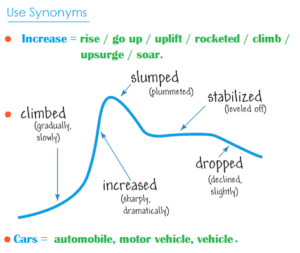
How are graphs described in IELTS? Let’s walk through the best vocabulary for the task, step by step.

1. Start With Introduction Phrases
Often ESL students start their essay with ‘The graph shows…’. While this is fine, the verb ‘shows’ could be replaced by a more exciting and high-level vocabulary word. Here are four different prompts to start your essay:
- The graph illustrates the trends in…
- The graph reveals information about the changes in…
- The graph provides the differences between…
- The graph presents how X has changed over a period of…
- DO NOT write the word below or above in your introduction. i.e. The graph above/below shows…
2. Add Suitable Adverbs
Adverbs help express a relation of place, time, circumstance, manner, cause, and degree, and can greatly add some color and interest to your writing as well as show off your range of vocabulary. Unlike adjectives (which describe nouns), adverbs describe verbs, or actions. Here’s a great list of adverbs to use:
3. Use Appropriate Synonyms
Again using a variety of nouns and verbs for words like rise and fall will help increase your overall score. Here are some suggestions:
4. Add Time Phrases
Below are some excellent time phrases with sentence examples:
Using IELTS Graph Vocabulary in a Model Essay
Look at the sample IELTS writing Task 1 graphs on the British Council website . Below is my model answer with useful words in bold:
The bar charts illustrate the trends in computer ownership, with a further classification by level of education, from 2002 to 2010.
Over the period, it can be observed that there was a significant surge in the percentage of the population that owned a computer. In the year 2002, only about 58% of the population owned a computer, whereas by 2010 , this gradually increased to where over three-quarters of individuals had a home computer.
Looking at the information by level of education reveals that higher levels of education correspond to higher levels of computer ownership in both of those years. In 2002, a significantly low percentage of the population who did not finish high school had a computer, but this figure skyrocketed by 2010, going from 15% to over 40%. There were also dramatic climbs , of approximately 30 percentage points, for those with a high school diploma or an unfinished college education (reaching 65% and 85%, respectively, in 2010).
To conclude, during the last decade, there has been a substantial growth in computer ownership across all educational levels.
Other IELTS Graph Vocabulary Resources
Keep in mind that IELTS writing task 1 may contain one of several different types of infographic: a bar chart, pie chart, line graph, diagram, etc. Regardless of the type, you’ll want to have a good handle on IELTS writing chart vocabulary.
For more specific guides to the different kinds of graphs, charts, and graphics you may find on IELTS writing task 1, check out the following resources:
- How to Describe a Bar Chart
- How to Describe a Pie Chart
- How to Describe a Map
- How to Describe a Process Diagram
You can also check out Magoosh’s IELTS linking words PDF for transitions between ideas. Hopefully you’ll start to incorporate some of these key words and phrases, as well as the above suggestions, in your IELTS Task 1 Writing. If you still don’t feel comfortable doing so, consider dedicating more time to your IELTS studies with Magoosh’s fun, engaging IELTS prep for extra practice.

Eliot Friesen-Meyers is the Senior Curriculum Manager for Magoosh IELTS and TOEFL. He attended Goshen College (B.A.), New York University (M.A.), and Harvard University (M.T.S.), gaining experience and skills in curriculum development, ESOL instruction, online teaching and learning, and IELTS and TOEFL test prep education. Eliot’s teaching career started with Literacy Americorps in Pittsburgh, Pennsylvania, and later, taught ESL programs at Northeastern University, University of California-Irvine, and Harold Washington College. Eliot was also a speaker at the 2019 TESOL International Conference . With over 10 years of experience, he understands the challenges students face and loves helping them overcome those challenges. Come join Eliot on Youtube , Facebook , and Instagram . Recent blog posts Complete Guide to IELTS Writing Task 1 Complete Guide to IELTS Writing Task 2
View all posts
More from Magoosh

11 responses to “Useful Vocabulary for Writing an IELTS Graph Essay”
I would like to get sample of all types of graph eassy
IELTS Liz offers a pretty good range of graphs and charts for IELTS Writing Task 1 (Academic) . You can also get a nice selection of these on the official IELTS websites . And last but not least, Magoosh offers a good selection of these types of questions with a Magoosh IELTS Premium subscription. 🙂
Thank you Magoosh for the comprehensive guide. I’m a subscriber to you GMAT course and is now checking out IELTS.
Wanna ask, I read and watched many other sources that says we should not write a conclusion. However, yours did.
So, is it permissible or not permissible?
The concluding sentence is optional–if you have time to write a concluding sentence after writing and reviewing your essay, then it looks good to have a concluding sentence. If you don’t have time to write a concluding essay or you’d rather focus on other parts of your essay, then it’s totally fine to leave it out. You can read more about this in our Complete Guide to IELTS Academic Writing Task 1.
“Growth” is not an noun? Because in the board it’s saying that it is a verb
Thanks for pointing this out! It seems like a mistake on our part. We should probably change that to “grow”. I’ll make a note for our writing team to make this change 🙂
I appreciate you very much. Your blog on Useful Words for Writing an IELTS Graph Essay was the outstanding blog ever. You have given so much good information about the new english words & grammar in your post, which will help me in future. Always keep data like this on your website
I have two significant questions. The first one is related to the unit of measurement in over view. Is it academic? And the second one is of conclusion. Do we need to write conclusion?
Hi Aakash, I’m afraid I don’t understand your first question. Can you please provide some more information? For your second question: a conclusion is not necessary. You can add one if you’d like, but it’s more important to spend time analyzing the graph.
This is one of the best among the essay I’ve read recently.
Thanks for the feedback! 🙂
Leave a Reply Cancel reply
Your email address will not be published. Required fields are marked *
CHARTS AND GRAPHS ESSAY EXAMPLES
IELTS Writing Task 1 Academic Charts And Graphs Essay Examples
View High Band Score Examples Of IELTS Writing Task 1 Academic Charts And Graphs Essays
IELTS Writing Task 1 – Table Essay Example 3
IELTS Writing Task 1 Academic table essay example that is a band score 8. The question is: The table below gives information about the problems faced by children in two primary schools in 2005 and 2015. Take a look at the sample answer
IELTS Writing Task 1 – Table Essay Example 2
IELTS Writing Task 1 Academic table essay example that is a band score 8. The question is : The table illustrates the proportion of monthly household income five European countries spend on food and drink, housing, clothing, and entertainment. Take a look at the sample answer.
IELTS Writing Task 1 – Table Essay Example 1
IELTS Writing Task 1 Academic table essay example that is a band score 8. The question is: The following table gives statistics showing the aspects of quality of life in five countries. Take a look at the sample answer.
IELTS Writing Task 1 – Pie Chart Example Essay 1
IELTS Writing Task 1 Academic pie chart essay example that is a band score 8. The question is: The chart below shows how much money is spent in the budget on different sectors by the UAE government in 2000. Take a look at the sample answer.
IELTS Writing Task 1 – Line Graph Essay Example 2
IELTS Writing Task 1 Academic line graph essay example that is a band score 8. The question is: The line graph illustrates the amount of spreads consumed from 1981 to 2007, in grams. Take a look at the sample answer.
IELTS Writing Task 1 – Line Graph Essay 1
IELTS Writing Task 1 Academic line graph essay example that is a band score 8. The question is: The line graph below shows changes in the amount and type of fast food consumed by Australian teenagers from 1975 to 2000. Take a look at the sample answer.
IELTS Writing Task 1 – Bar Chart Example Essay 3
IELTS Writing Task 1 Academic bar chart essay example that is a band score 8. The question is: The chart shows the percentage of drugs taken by girls and boys in a school in New Zealand. Take a look at the sample answer.
IELTS Writing Task 1 – Bar Chart Example Essay – 2
IELTS Writing Task 1 Academic bar chart essay example that is a band score 8. The question is: The chart below shows the number of men and women in further education in Britain in three periods and whether they were studying full time or part-time. Take a look at the sample answer.
IELTS Writing Task 1 – Bar Chart Essay Example 1
IELTS Writing Task 1 Academic bar chart essay example that is a band score 8. The question is: The chart below gives information about Someland’s main exports in 2005, 2015, and future projections for 2025. Take a look at the sample answer.
Related Posts

IELTS Discussion Essay Sample 2 – Economics
IELTS Writing Task 2 discussion essay example that is a band score 8. The question…
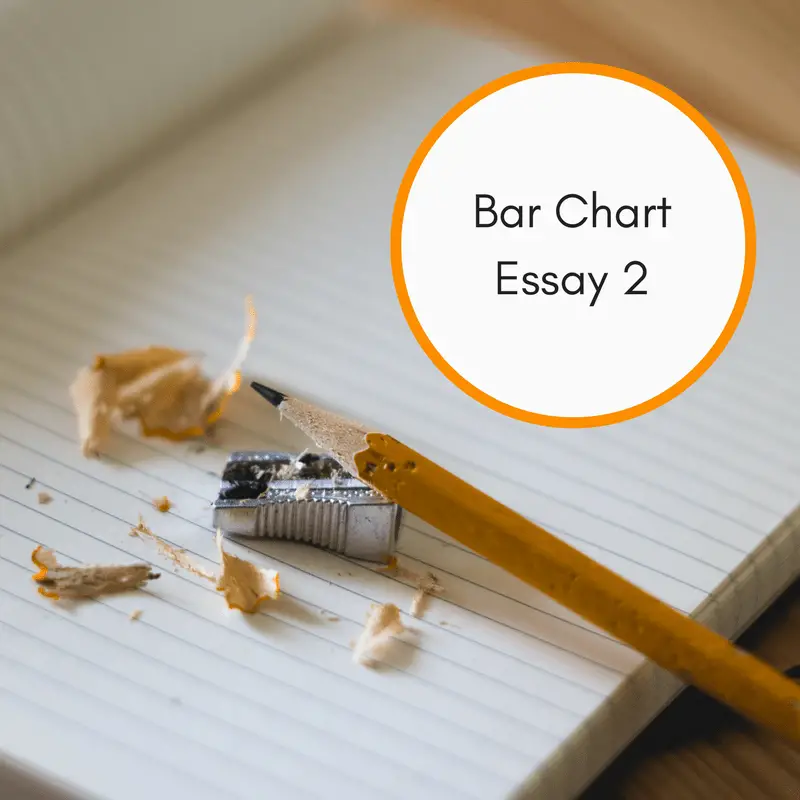
IELTS Writing Task 1 Academic bar chart essay example that is a band score 8.…
IELTS Mentor "IELTS Preparation & Sample Answer"
- Skip to content
- Jump to main navigation and login
Nav view search
- IELTS Sample
20 Recent IELTS Graph samples with answers
The chart below shows how much money is spent in the budget on different sectors by the uae government in 2000..
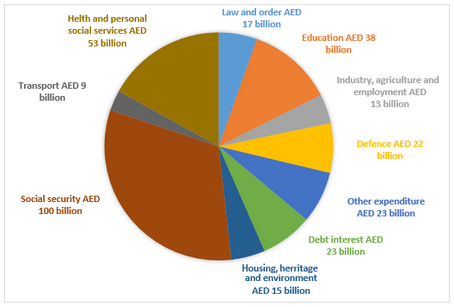
The charts below show the growth in the population in some of the world’s largest cities as well as the population distribution in urban and rural areas.
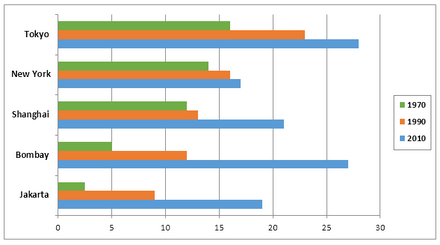
The average prices per kilometre of clothing imported into the European Union from six different countries in 1993 and 2003 are shown in the bar chart below.
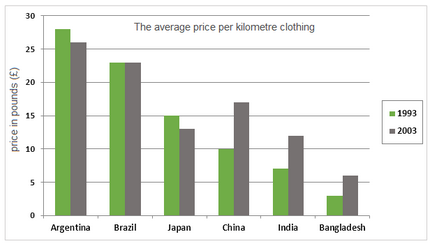
The bar charts below show the number of hours each teacher spent teaching in different schools in four different countries in 2001.
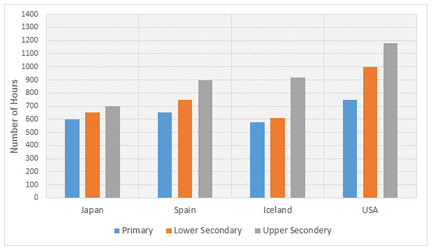
The line graphs below show the production and demand for steel in million tonnes and the number of workers employed in the steel industry in the UK in 2010.
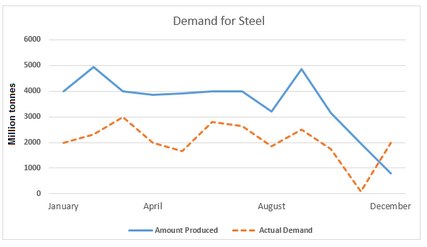
The bar charts and line graph below show the results of a survey conducted over a three-year period to discover what people who live in London think of the city.
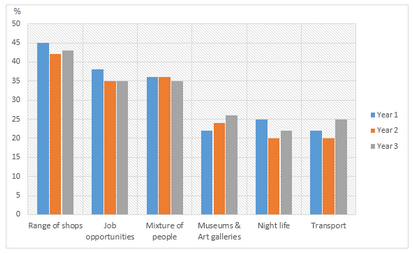
The pie charts below show the online sales for retail sectors in New Zealand in 2003 and 2013.
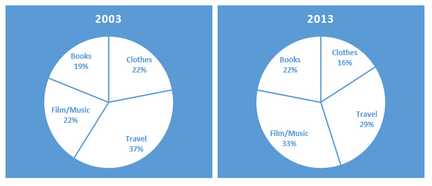
The number of tourists visiting Malaysia and Dubai from 1995 to 2003 is presented below.
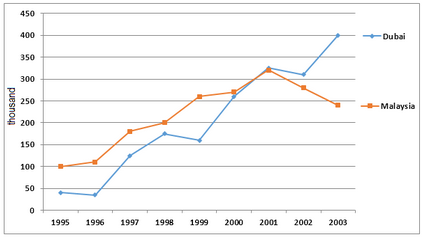
The bar chart below shows the estimated sales of jeans for two companies next year in Turkey. The pie chart shows the projected market share of the two companies in jeans at the end of next year.
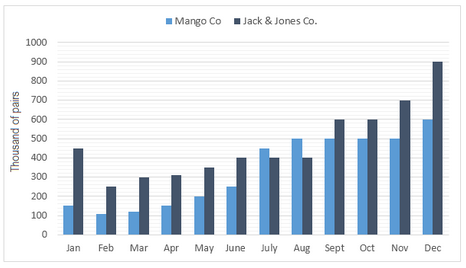
The graph below shows a survey result of 4000 participants who expressed what important aspects they have learned from the internship they have completed.
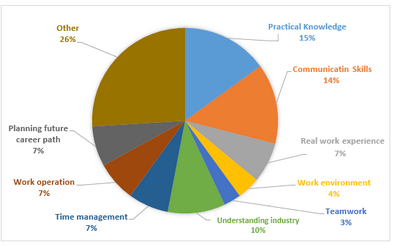
The graph below shows the top priorities by business companies in the USA in 2016.
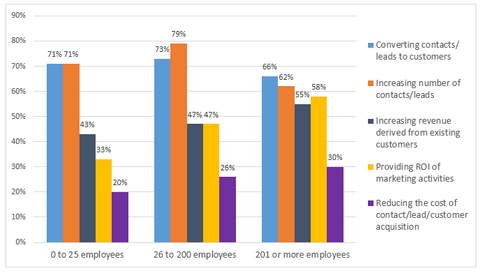
The graphs below show the average monthly expenditure on children’s sports and participation in different sports in the UK from 2008 to 2014.
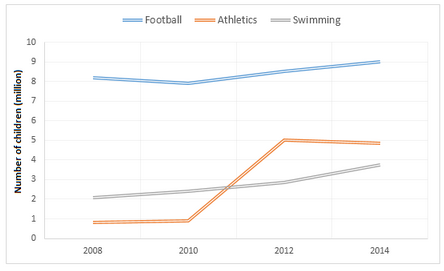
The pie charts below show the online shopping sales for retail sectors in Australia in 2010 and 2015.

The bar chart below shows Scotland’s exports to the rest of the UK and the rest of the world for the year 2014.
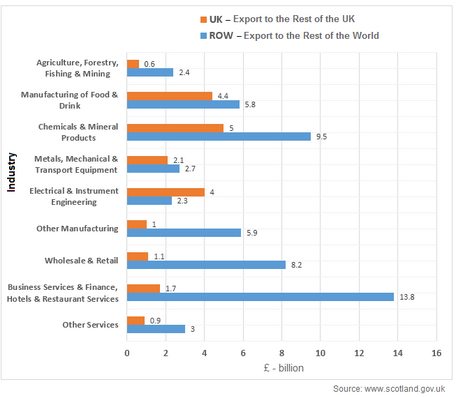
The chart below shows the changes in sales of four different types of books from 2002 to 2012.
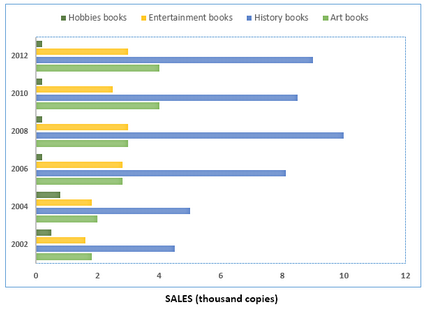
The diagram shows the procedure for university entry for high school graduates.
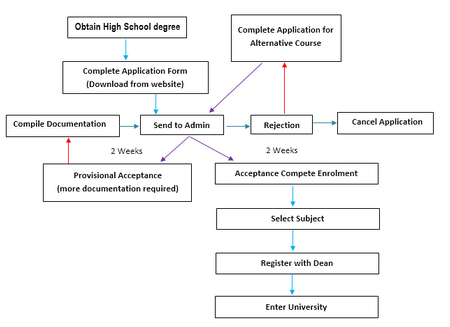
The chart below shows Morocco’s income from different economic sectors in 2003 as well as its income from fishing from 1982 to 2003.
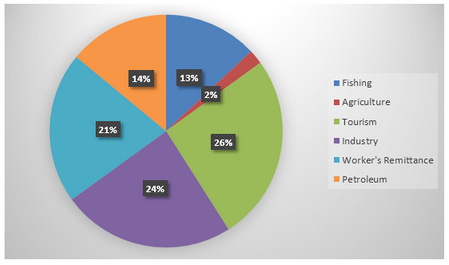
The bar chart below shows the proportions of English men and women of different ages who were living alone in 2011. The pie chart compares the numbers of bedrooms in these one-person households.
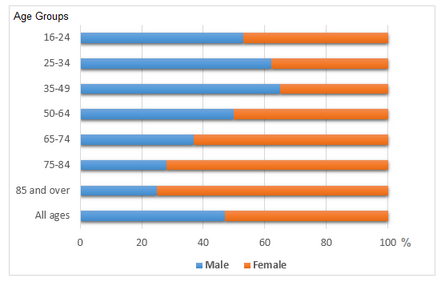
The diagram below shows the life cycle of a salmon, from egg to adult fish.
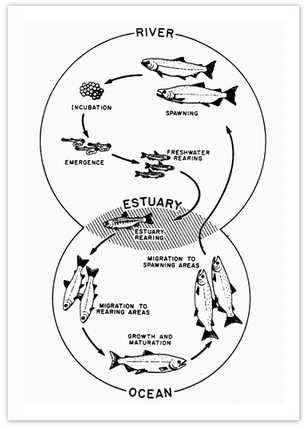
The table below shows the worldwide market share of the notebook computer market for manufacturers in the years 2006, 2007 and 2014.
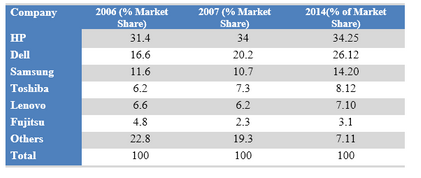
- Academic Writing Task 1
IELTS Materials
- IELTS Bar Graph
- IELTS Line Graph
- IELTS Table Chart
- IELTS Flow Chart
- IELTS Pie Chart
- IELTS Letter Writing
- IELTS Essay
- Academic Reading
Useful Links
- IELTS Secrets
- Band Score Calculator
- Exam Specific Tips
- Useful Websites
- IELTS Preparation Tips
- Academic Reading Tips
- Academic Writing Tips
- GT Writing Tips
- Listening Tips
- Speaking Tips
- IELTS Grammar Review
- IELTS Vocabulary
- IELTS Cue Cards
- IELTS Life Skills
- Letter Types

- Privacy Policy
- Cookie Policy
- Copyright Notice
- HTML Sitemap

IMAGES
VIDEO
COMMENTS
IELTS Line Graph Model (Band Score 9) This model line graph for IELTS is estimated at band score 9. The model answer below is for IELTS writing task 1 academic paper. Use this sample writing as a template for structure, key features and language for any IELTS line graph. There are also some tips given below to guide you and help you understand ...
How To Write an. IELTS Line Graph Essay. Here is the 5 steps process I recommend for planning and writing IELTS line graph essays: 1) Analyse the question. 2) Identify the main features. 3) Write an introduction. 4) Write an overview. 5) Write the details paragraphs. I'm going to take you through the whole process step-by-step as we work on a ...
Tips for IELTS Writing Task 1 Line Graph 2022. In the introduction part, you can paraphrase the question asked or the topic of the essay. When you explain the overall trend, identify the main feature and explain it. Ensure that each paragraph has examples that are percentages or numbers to support the sentence written as an explanation.
IELTS Academic writing task 1 - Line Graph. A line graph (also known as line chart) is a graphical presentation of data that changes over time. It uses line segments to connect data points and shows changes in data. The X and Y axis are used to denote the changes in the data. Within a line graph, there are points which are connected to show the ...
To make the best use of your time it's important to write with a clear structure, focus on the most important trend or trends, choose appropriate vocabulary and avoid common mistakes. In this tutorial, we have a band range 6.5 / 7 academic task 1 IELTS line graph example essay graded by an ex-IELTS examiner (on our team of essay correctors).
How to Tackle Line Graphs in IELTS Writing Task 1 Questions. In a line graph, there are usually multiple lines that show changes over time. In your writing, you need to group information based on lines having similar trends or values, so your essay structure will be as follows: Introduction: Paraphrase the question
Continuing with the sites IELTS line graph examples, this is an example of a line graph comparing car theft. It's important to organise your graph clearly, draw out the key trends and make comparisons. ... IELTS Essay: English as a Global Language. Apr 03, 24 03:49 PM. Evaluate my writing task for academic ielts, pls Academic IELTS writing task ...
On IELTS test day, you may encounter line graphs in the Academic Writing Task 1 section. To help you understand what components make up a good response to a line graph question, let's take a look at a model band 9 essay.. To see why this essay is band 9, see our scorer commentary after the model essay below, and check out the official IELTS rubric for Task 1 (PDF).
IELTS Writing Task 1 Academic line graph essay example that is a band score 8. The question is > The line graph below shows changes in the amount and type of fast food consumed by Australian teenagers from 1975 to 2000. Take a look at the sample answer >>
IELTS Sample Essays Answer. The line graph shows energy consumption by fuel type in the United States from 1980-2008, with projected use until 2030. Overall, fossil fuels have been the dominant type and will continue this trend into the future. Nuclear and renewable energy sources have represented a small but significant proportion of total ...
IELTS Line Graph Band Nine Sample Answer. This question below is my band nine answer for a fairly famous task one question. Once you've finished, keep scrolling to find out why it would get a band nine and for some extra tips. The graph below shows the population of India and China from the year 2000 to the present day with projections for ...
1. Analyze the question. It is the first step to framing your answer in the IELTS Writing task1 Academics. Read the question; understand the type of question, figures, and axis to frame your answers. 2. Identify the main features. For distinguishing the theme and the context, you need to identify the main features in the graph question.
IELTS Writing Line Graph Task 1: How to Answer. Line graphs or Line charts are periodical graphs. Which means they show values of two constants over a period of time. These graphs usually indicate the pattern of growth of the given subjects. Line graphs can be increasing, decreasing or stable. As a part of your task, you must analyse the given ...
Lesson 2: Line Graph Tutorial: IELTS Academic Writing Task 1. This post will help you to write a successful line graph essay, there is a model answer for you to compare your work to at the end of the post. Remember that your essay should have a minimum of 150 words and ideally should be completed in 20 minutes.
For example, my first line for this essay will be: The line graph shows information about sales in an unnamed bakery in the year 2014. Speaking of paraphrasing, you should also not include any reference to "below." Whilst the task description is above the graph, your essay will be on a separate piece of paper or on a computer screen.
Take a look at the IELTS Writing Task 1 Academic essay example below >>. *This line graph question and answer were provided by a student. IELTS Achieve did not design this question*. The graph gives information about the number of spreads (Margarine, low fat & reduced spread and butter) consumed from the year 1981 up to 2007.
IELTS Vocabulary. When it comes to IELTS writing task 1, 25% of your marks are for the range of words you use. That means IELTS graph vocabulary is a very important component to review as you prepare for the Writing Task 1. You can start by checking out this IELTS writing task 1 vocabulary guide. And below, I'll provide an overview of words ...
IELTS Writing Task 1 - Line Graph Essay 1. IELTS Writing Task 1 Academic line graph essay example that is a band score 8. The question is: The line graph below shows changes in the amount and type of fast food consumed by Australian teenagers from 1975 to 2000. Take a look at the sample answer.
IELTS Task 1 Essay: Line Graph (Steel) The line charts give information about the demand for steel and number of workers employed in a country from January to December. The charts detail demand for steel and the number of workers employed in a given country over a one year period. Looking from an overall perspective, it is readily apparent that ...
Recent IELTS Graph 20: The table below shows the worldwide market share of the notebook computer market for manufacturers in the years 2006, 2007 and 2014. Summarise the information by selecting and reporting the main features and make comparisons where relevant. Answer: The table gives information about the percentages of international market shares of different notebook computer brands in ...
IELTS line graph sample essays. Skip to content. IELTS Book Samples. Cambridge IELTS 18; Cambridge IELTS 17; Cambridge IELTS 16; Cambridge IELTS 15; Cambridge IELTS 14; ... Line Graph Task 1. The Graph Below Shows the Average Monthly Change in the Prices of Three Metals During 2014.